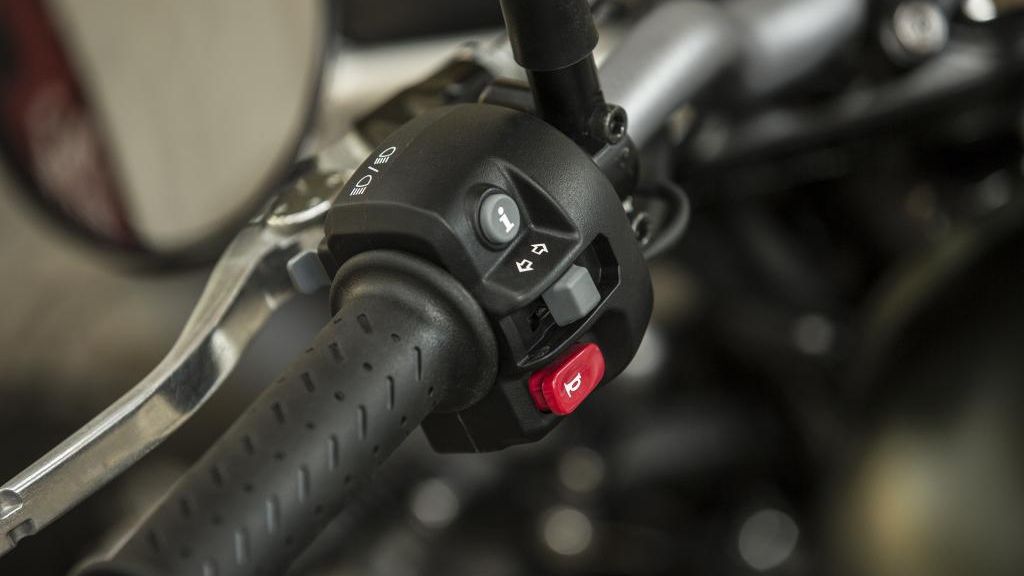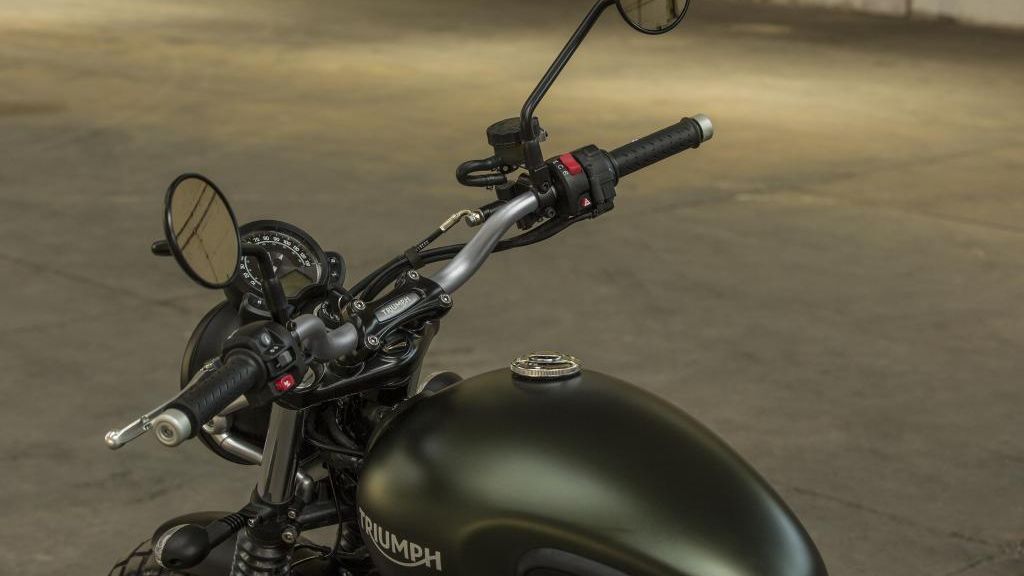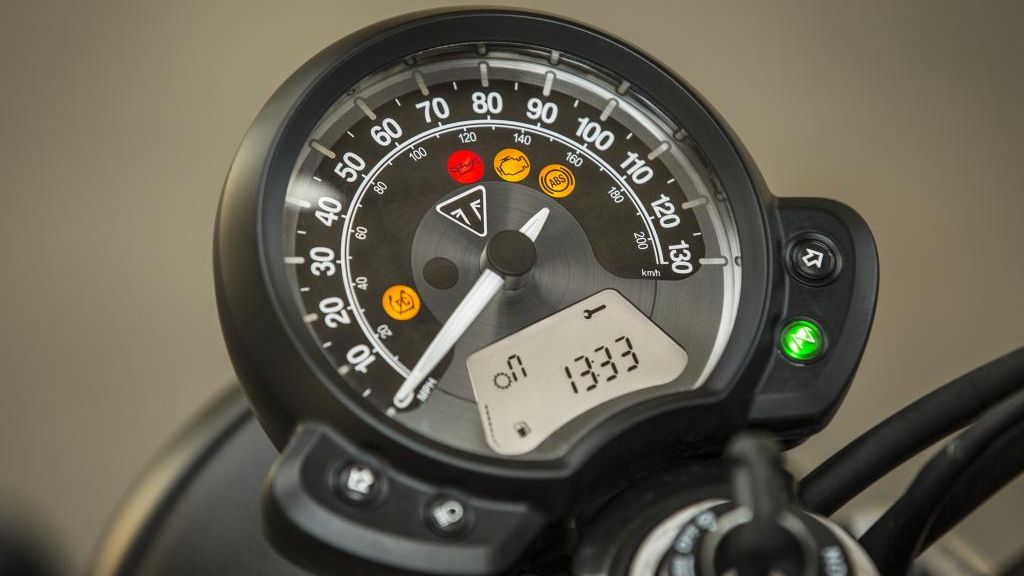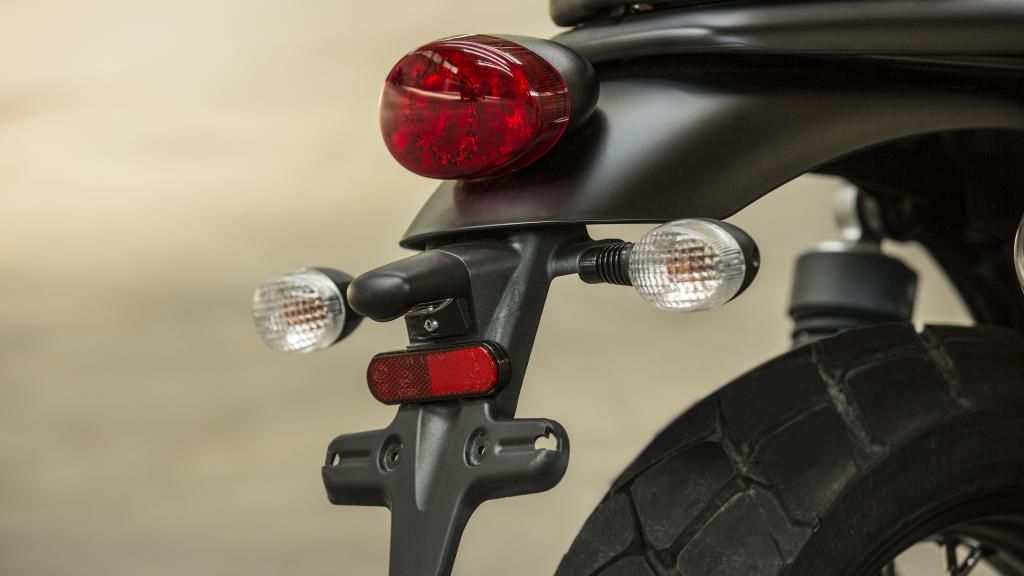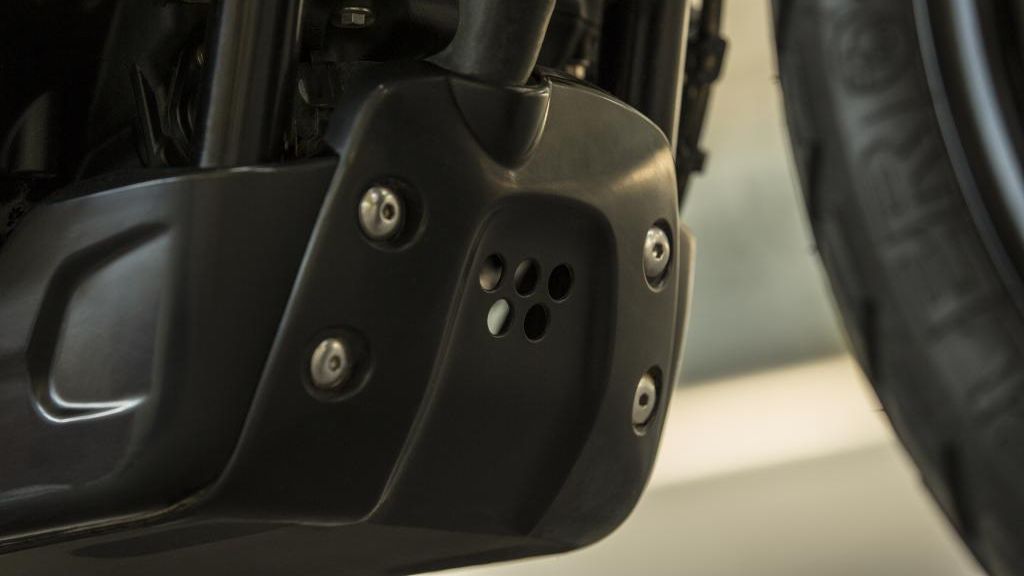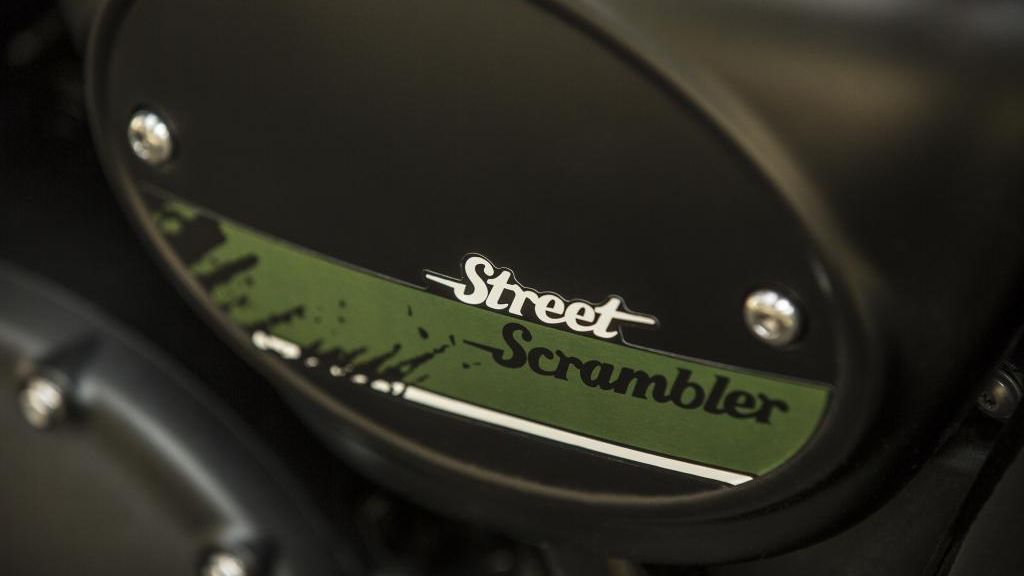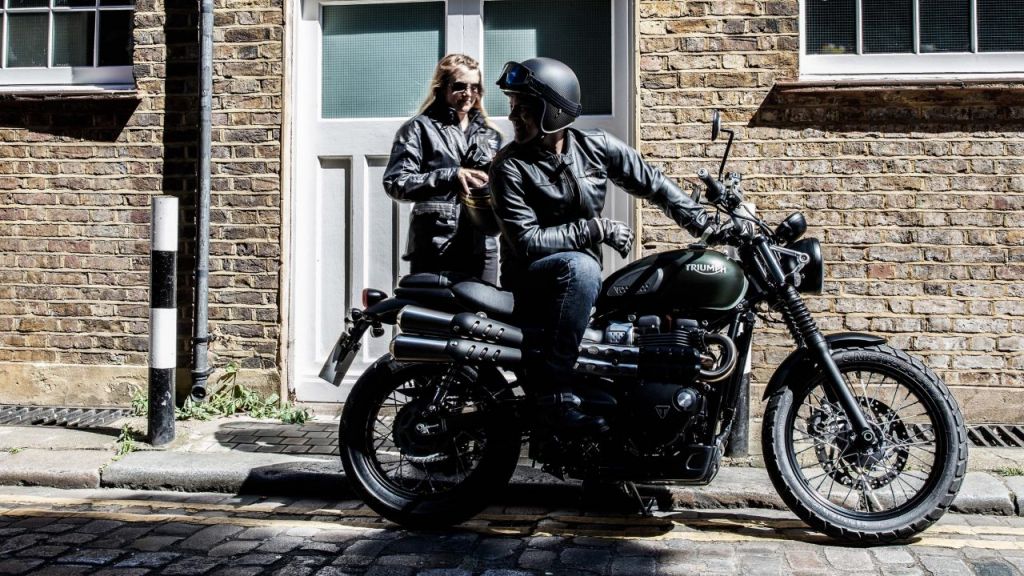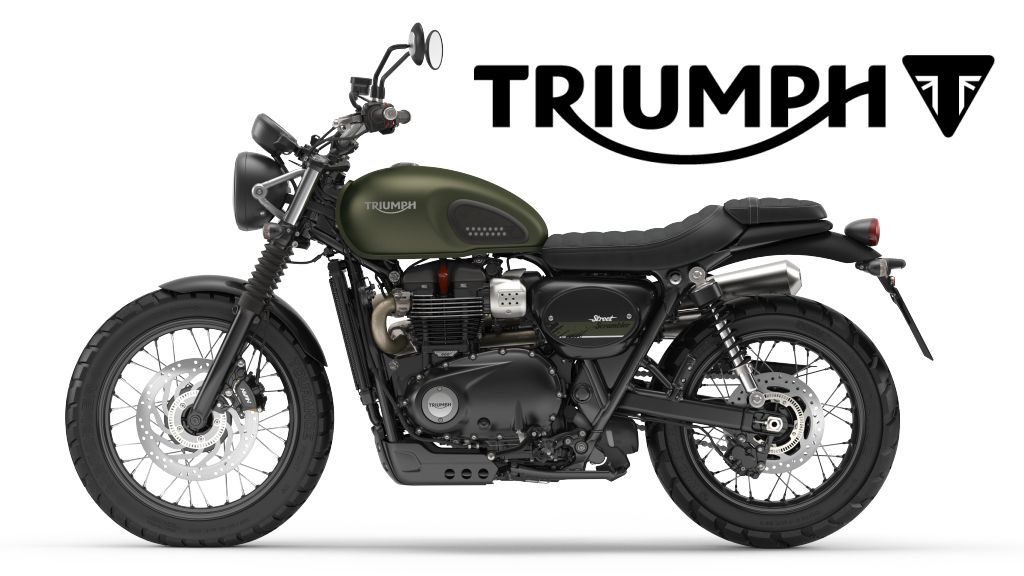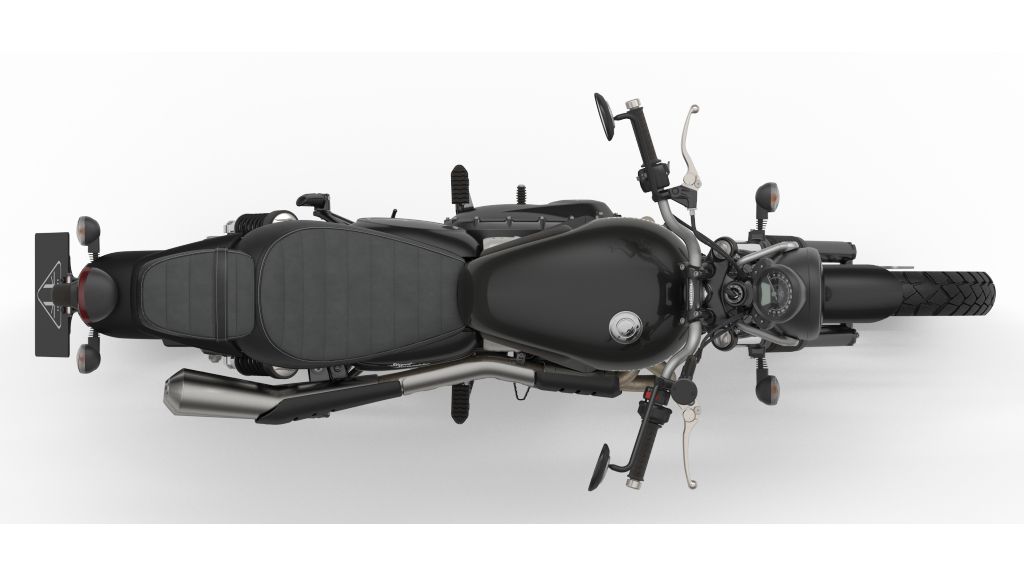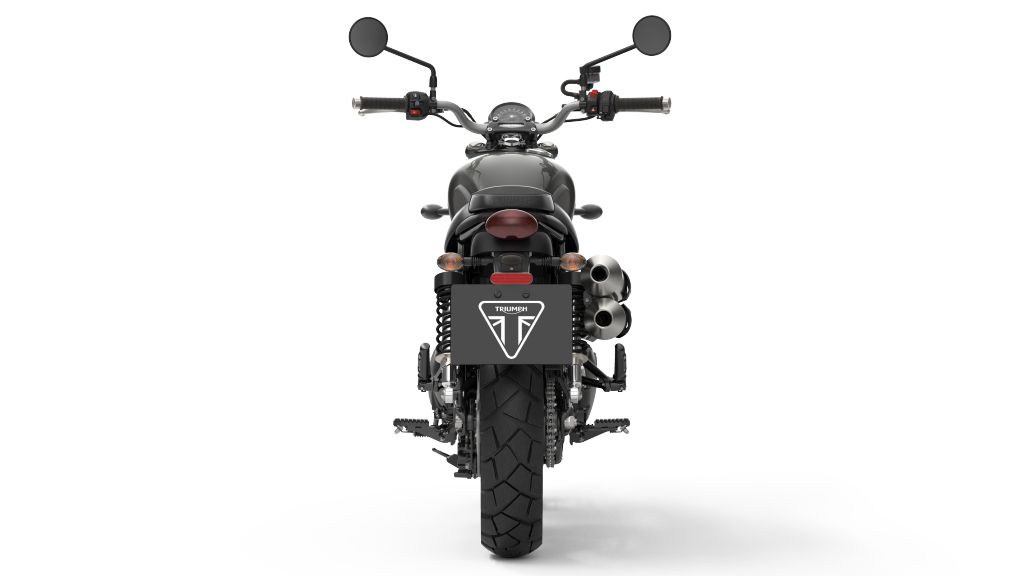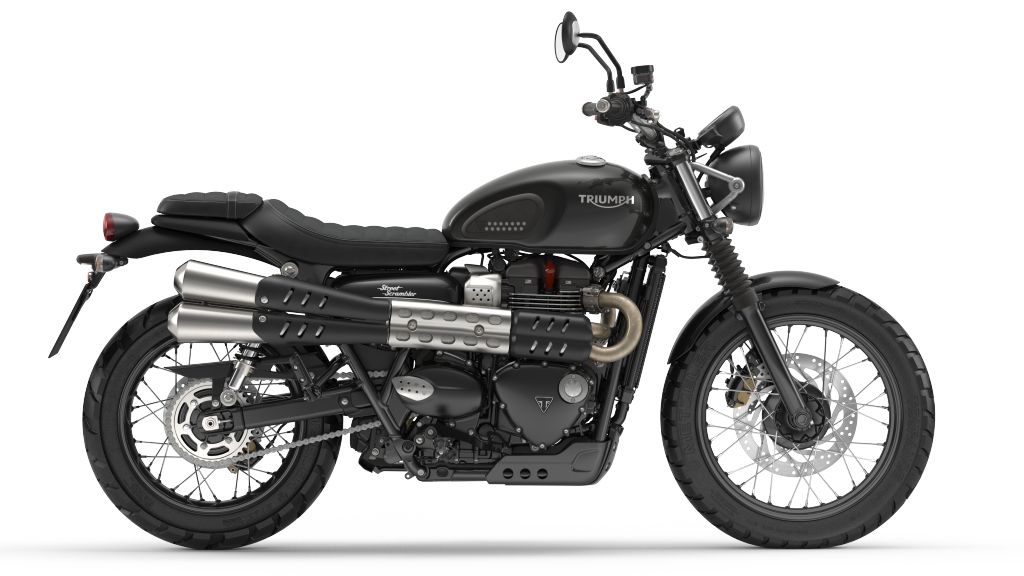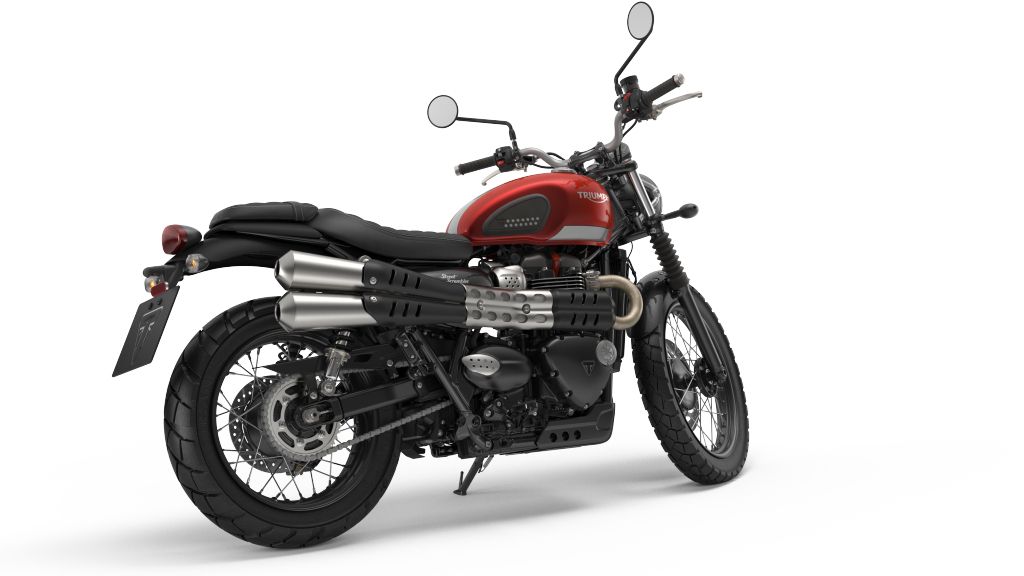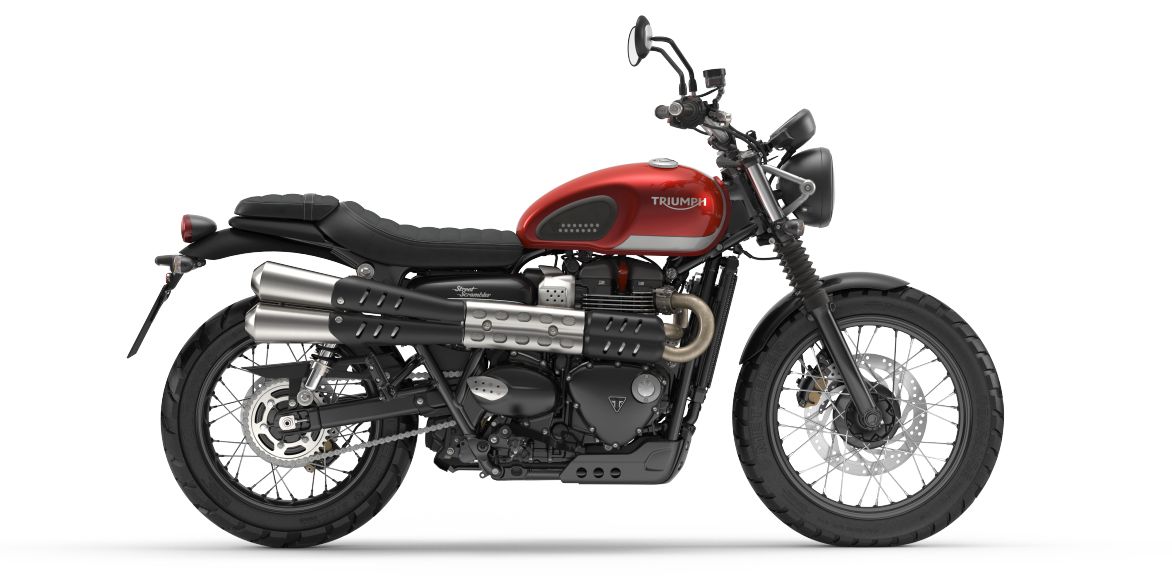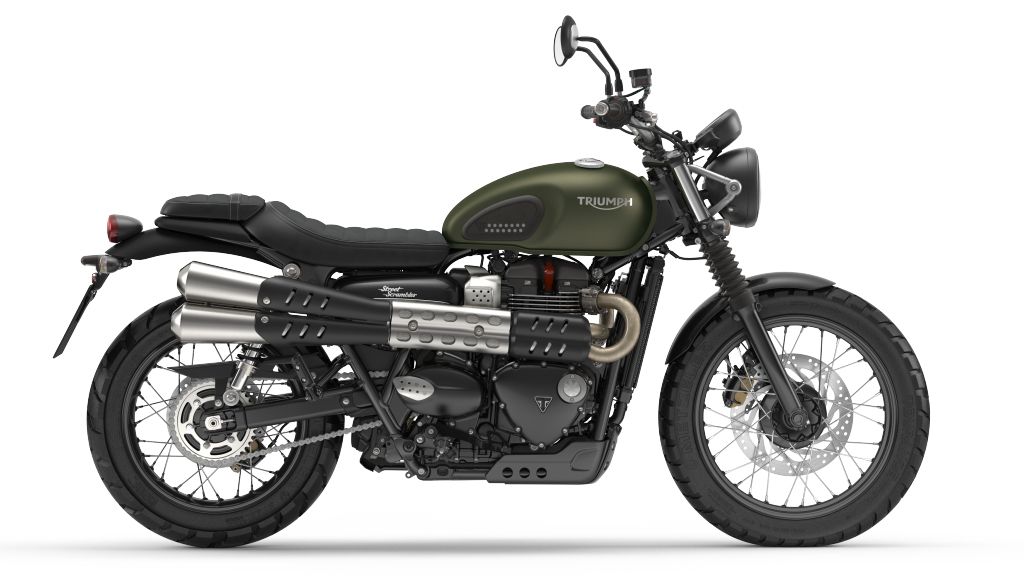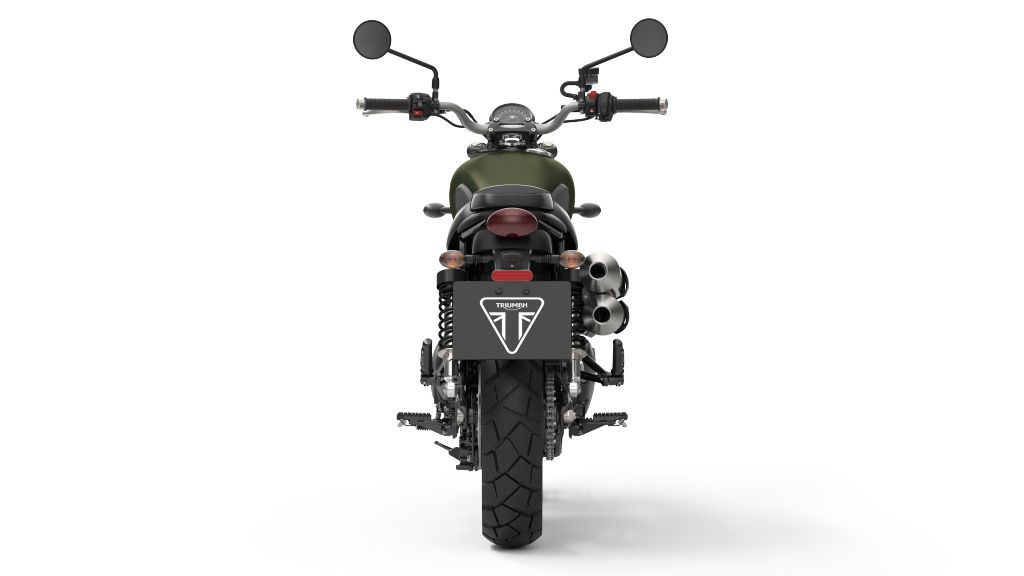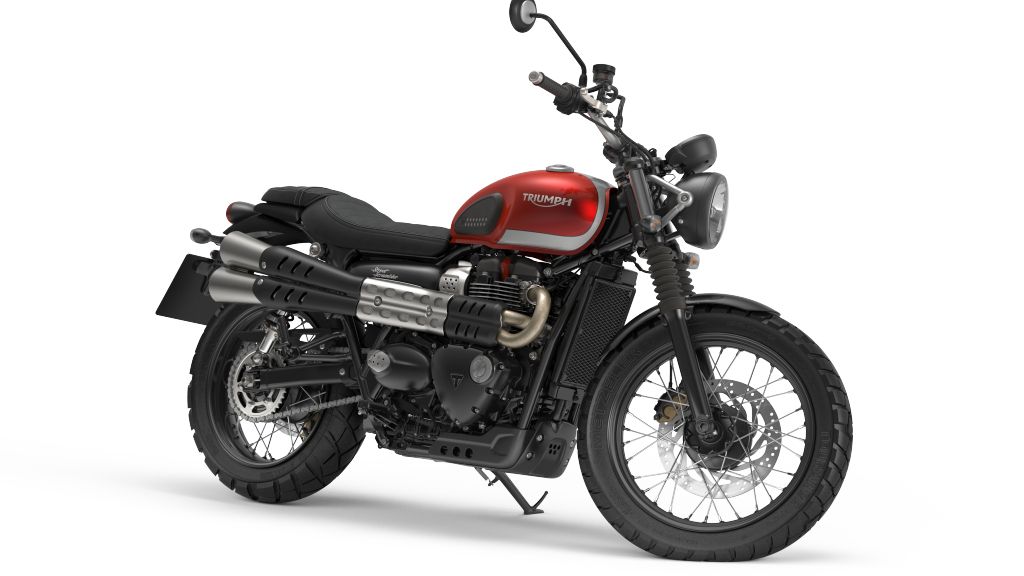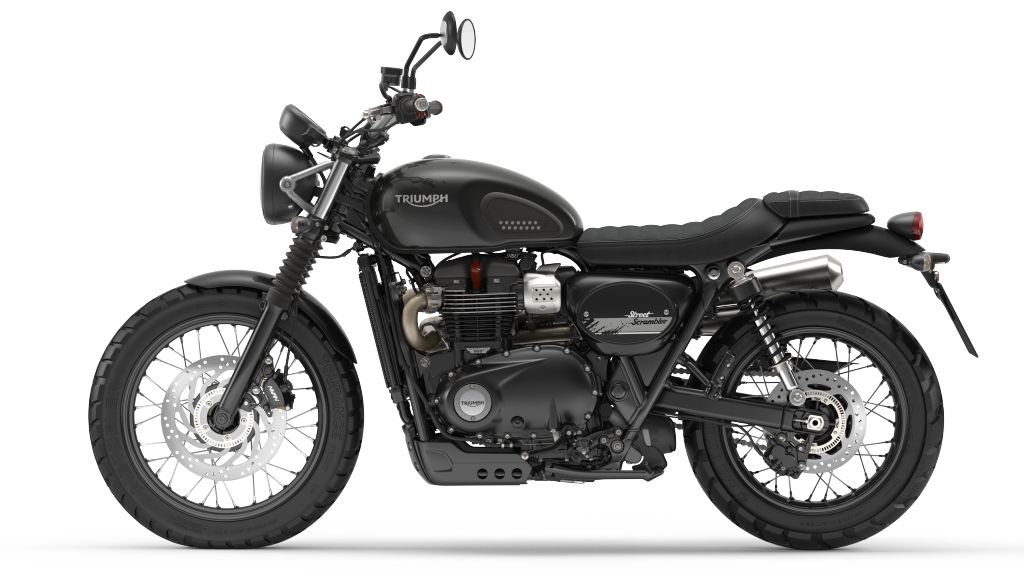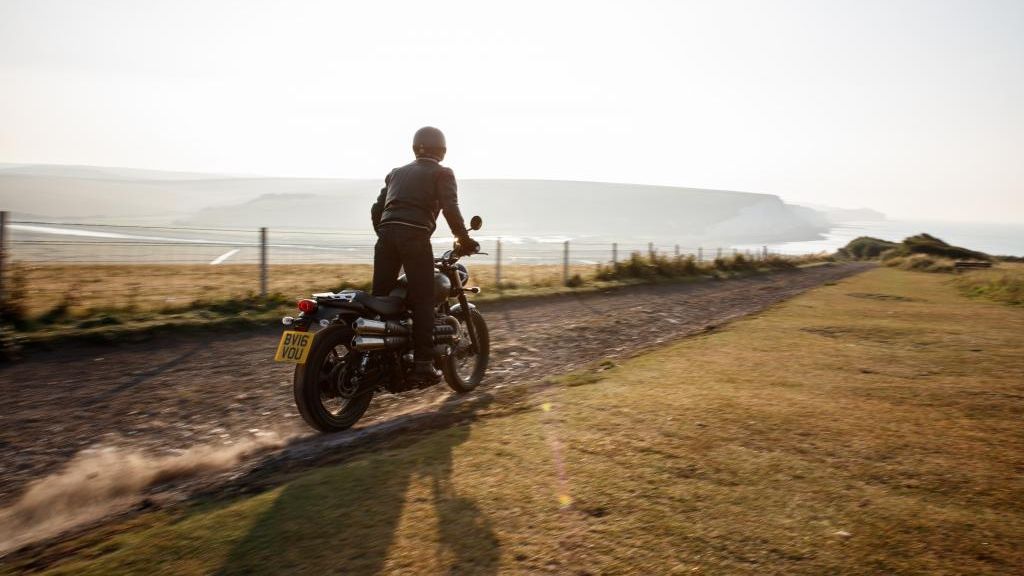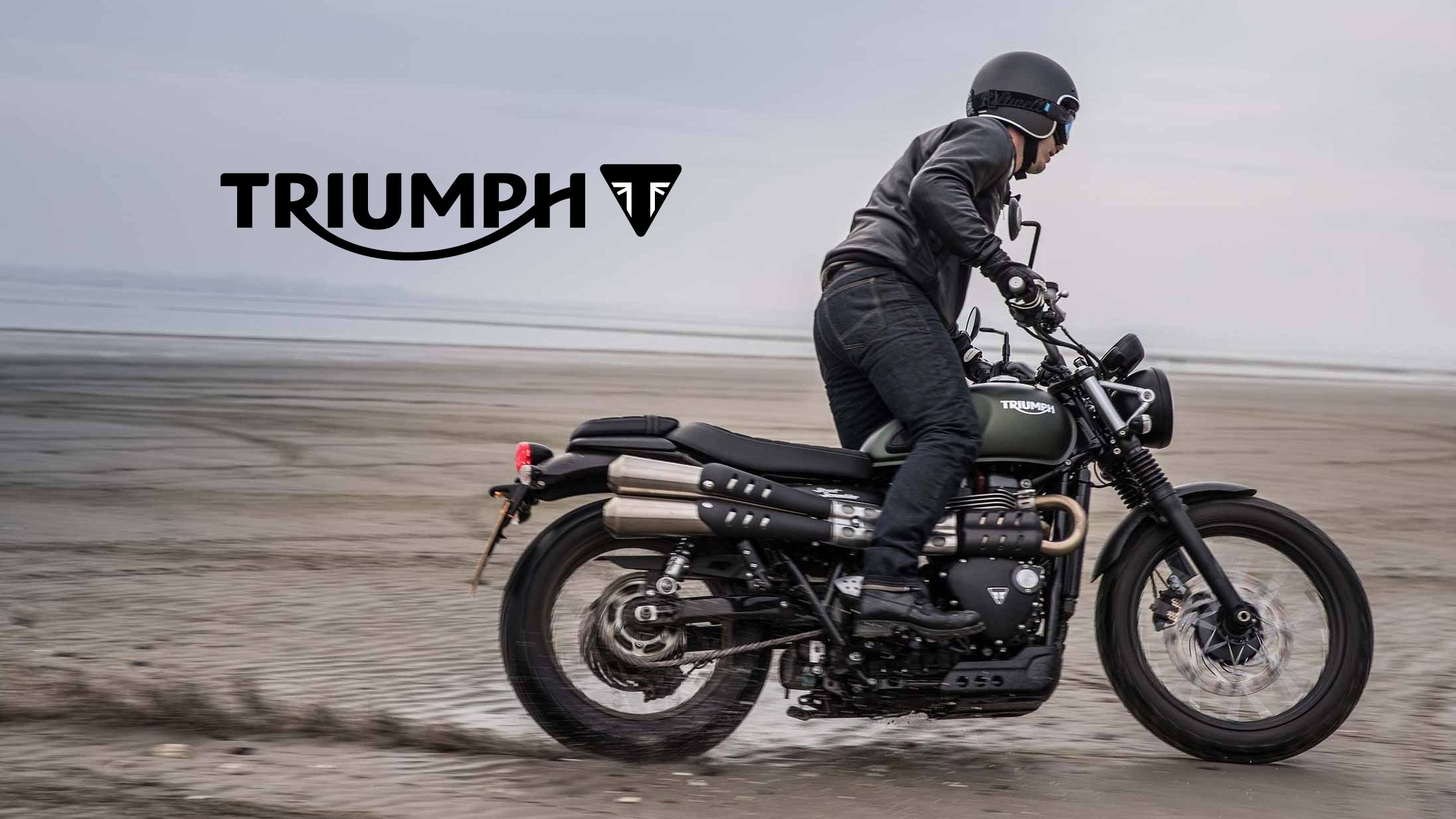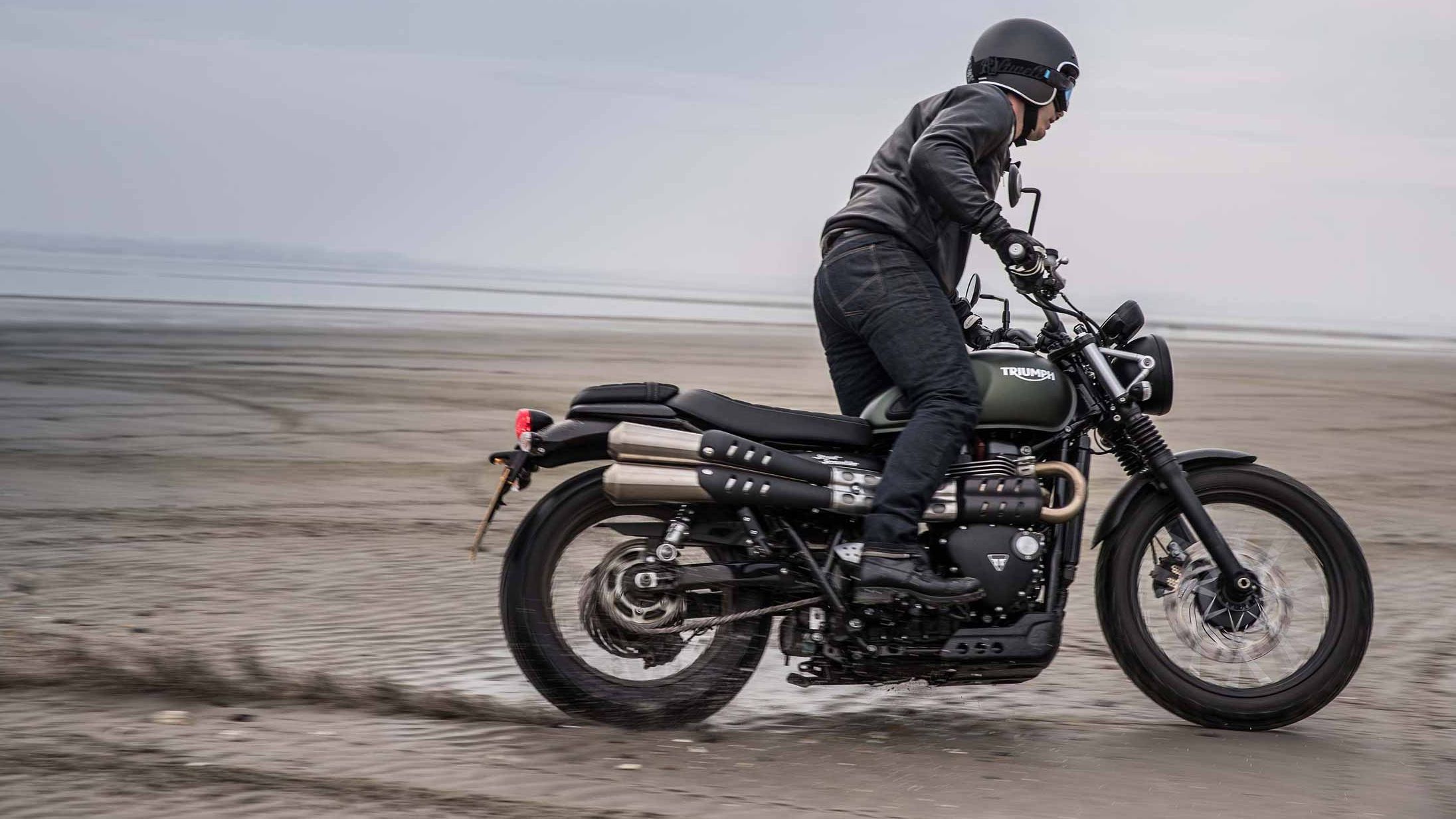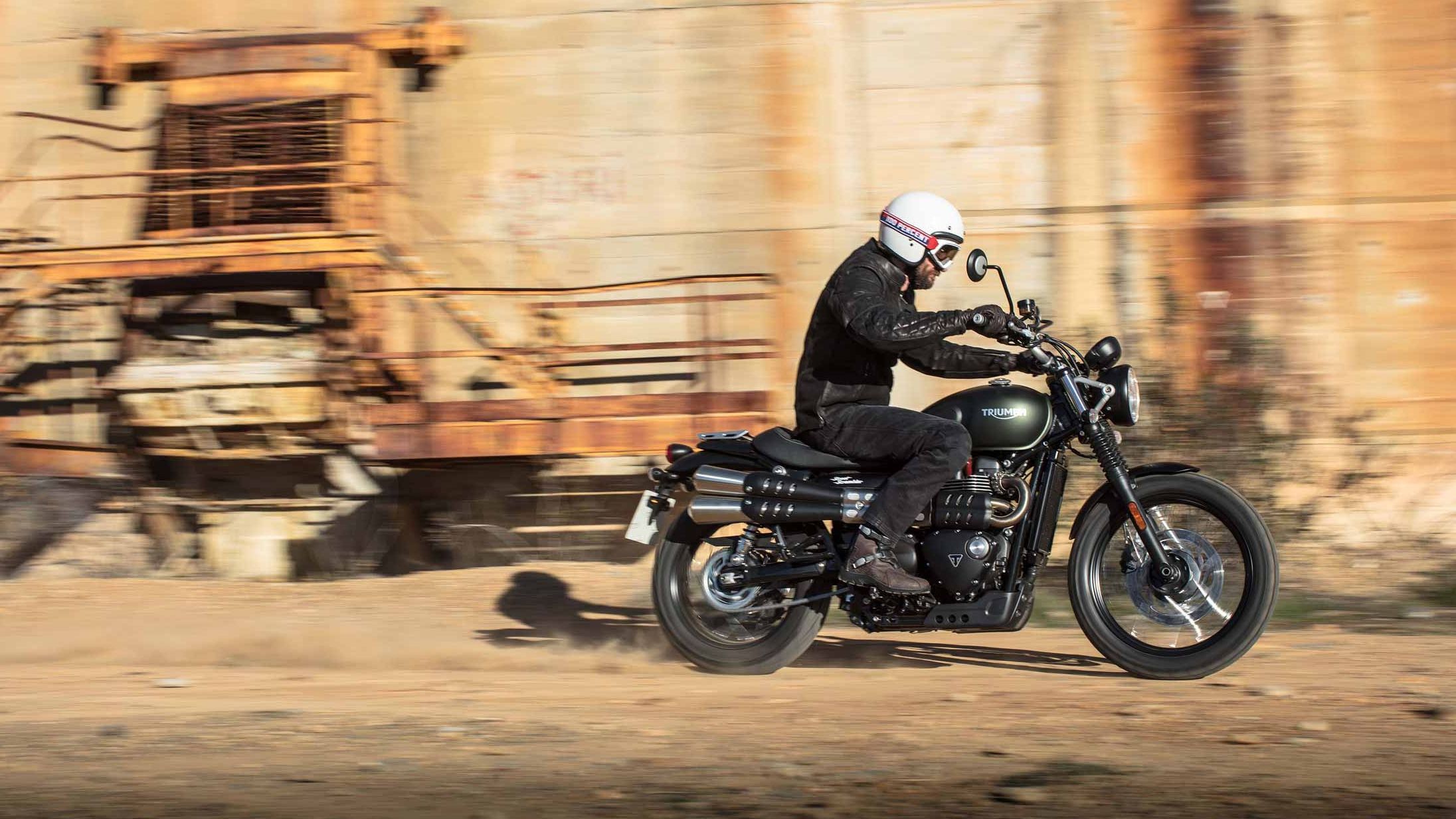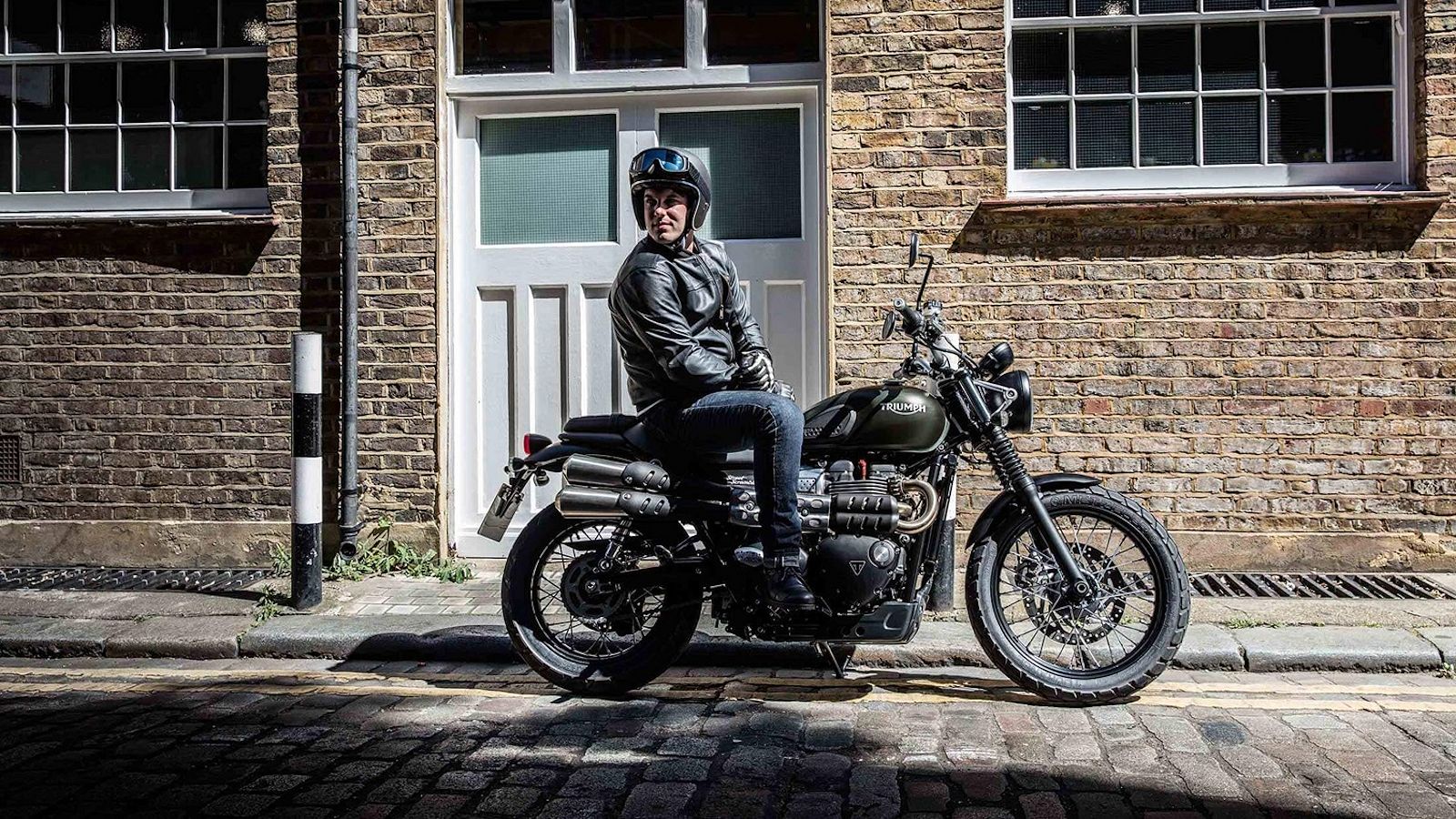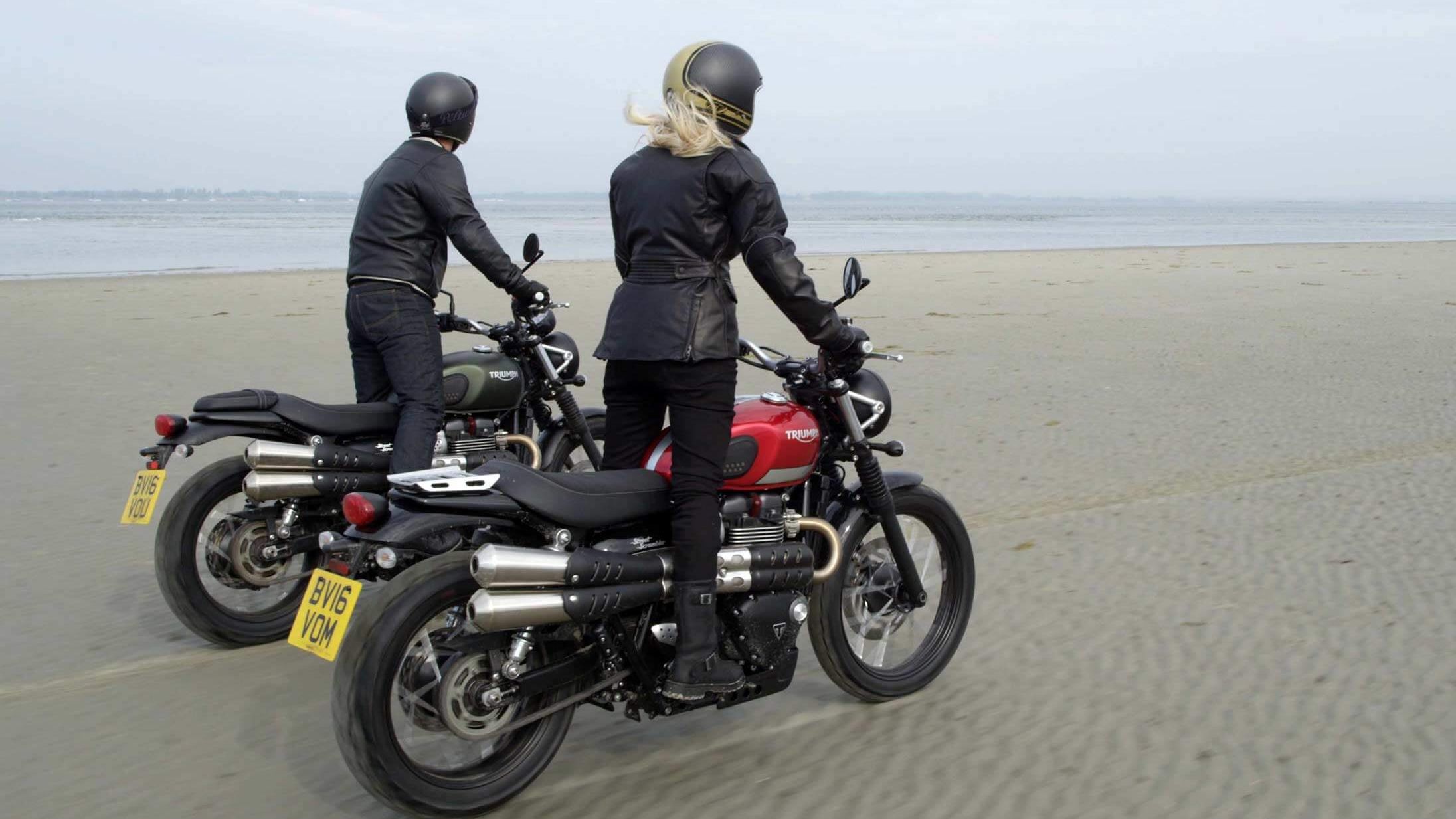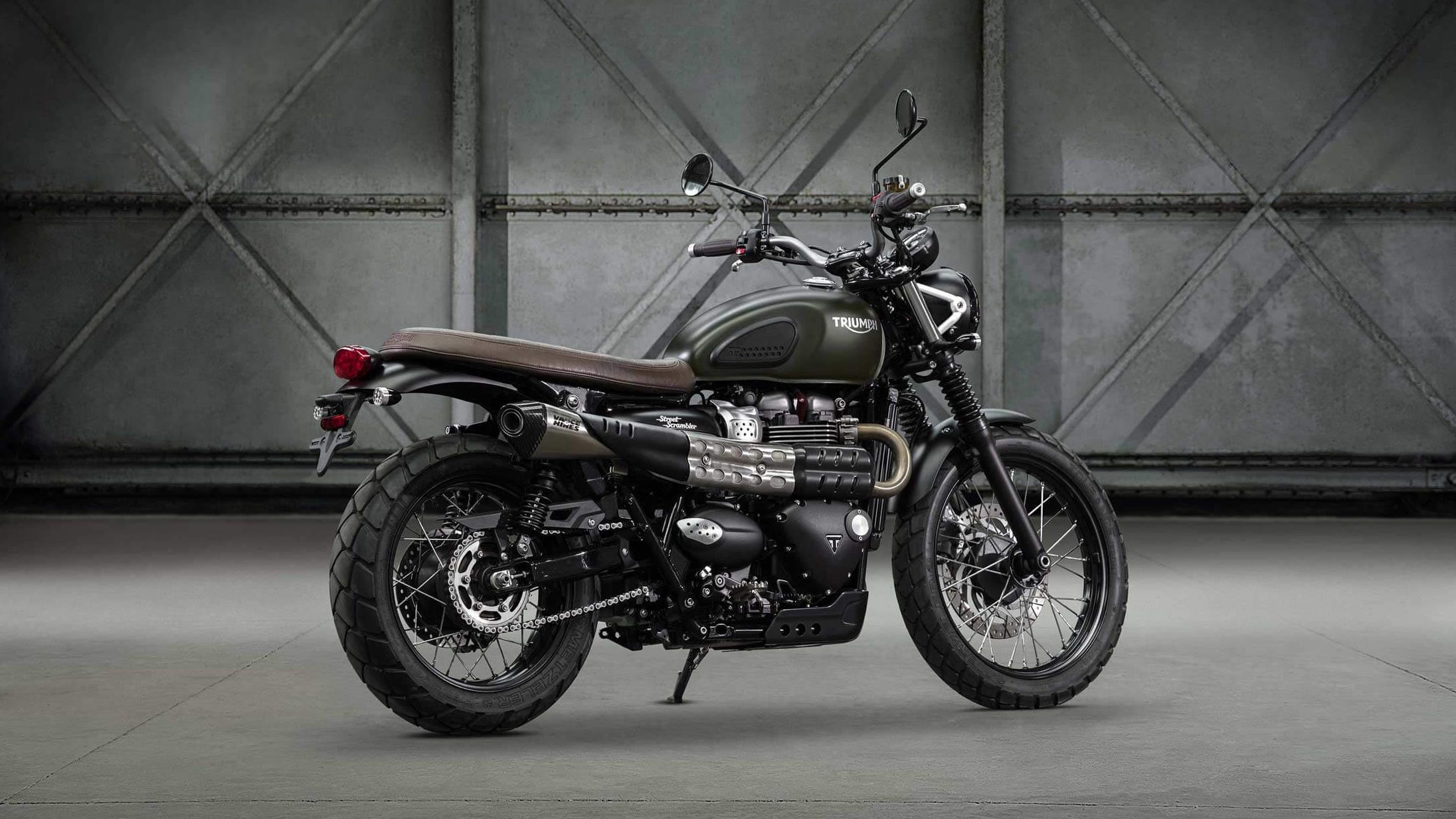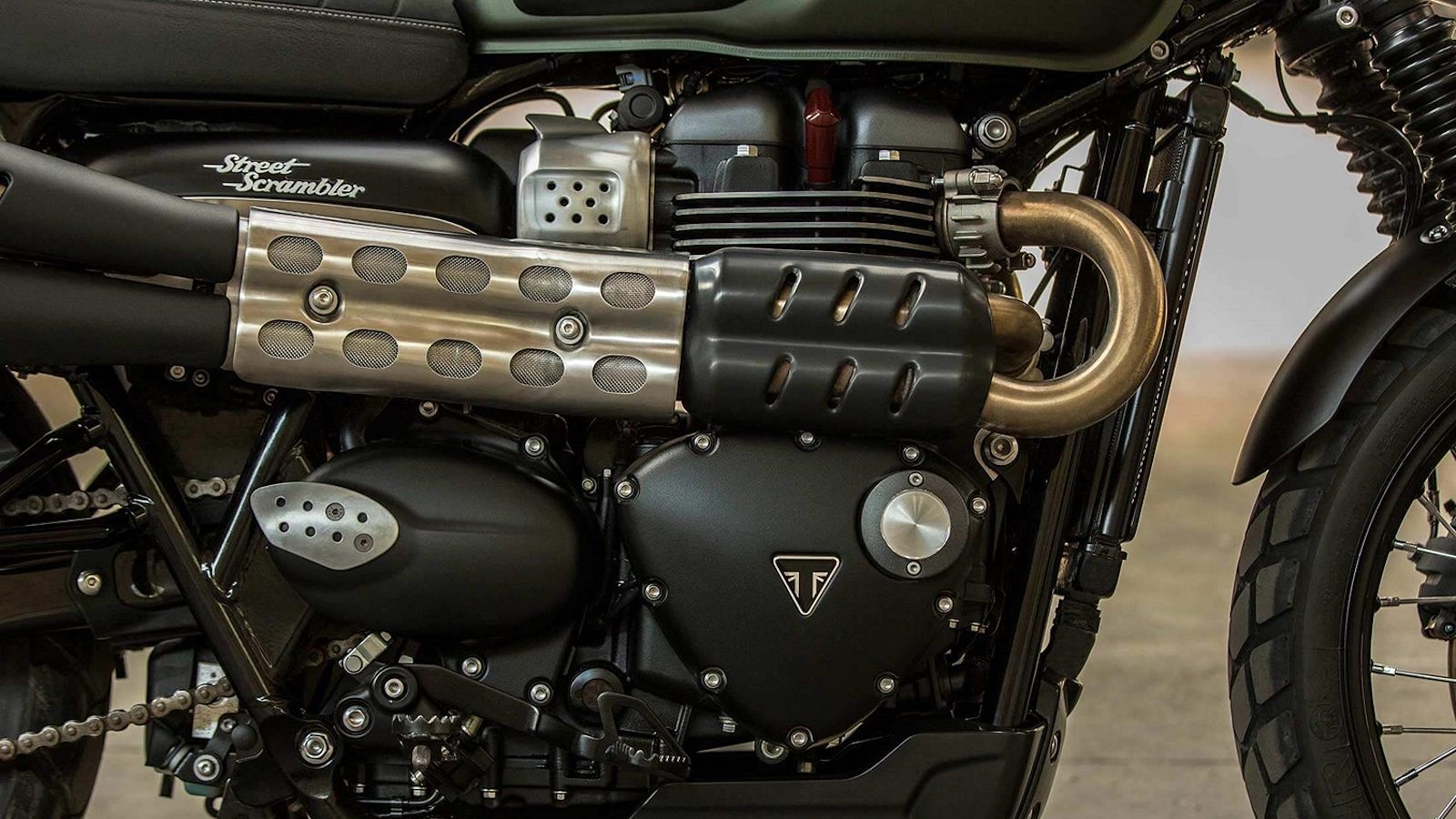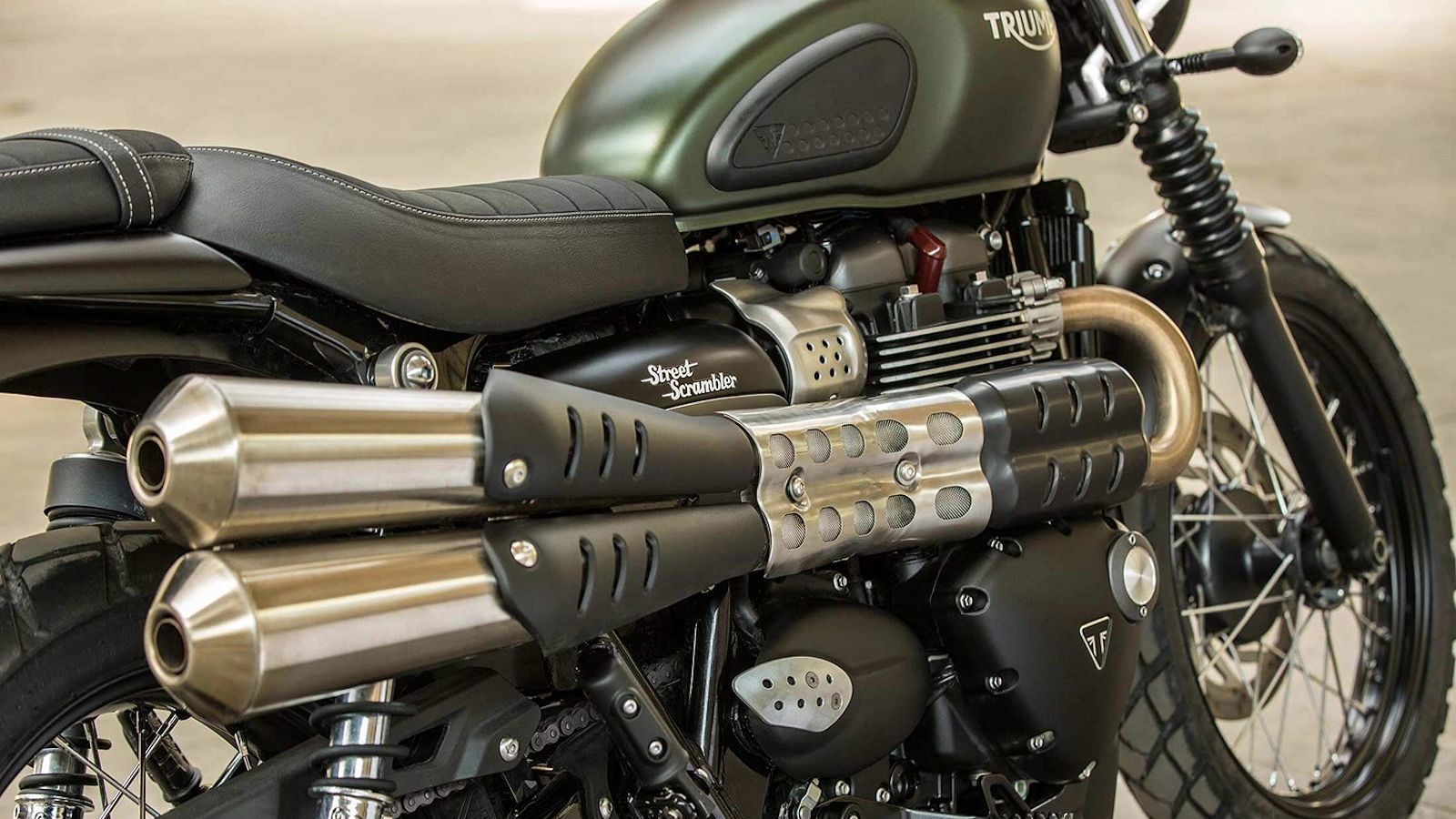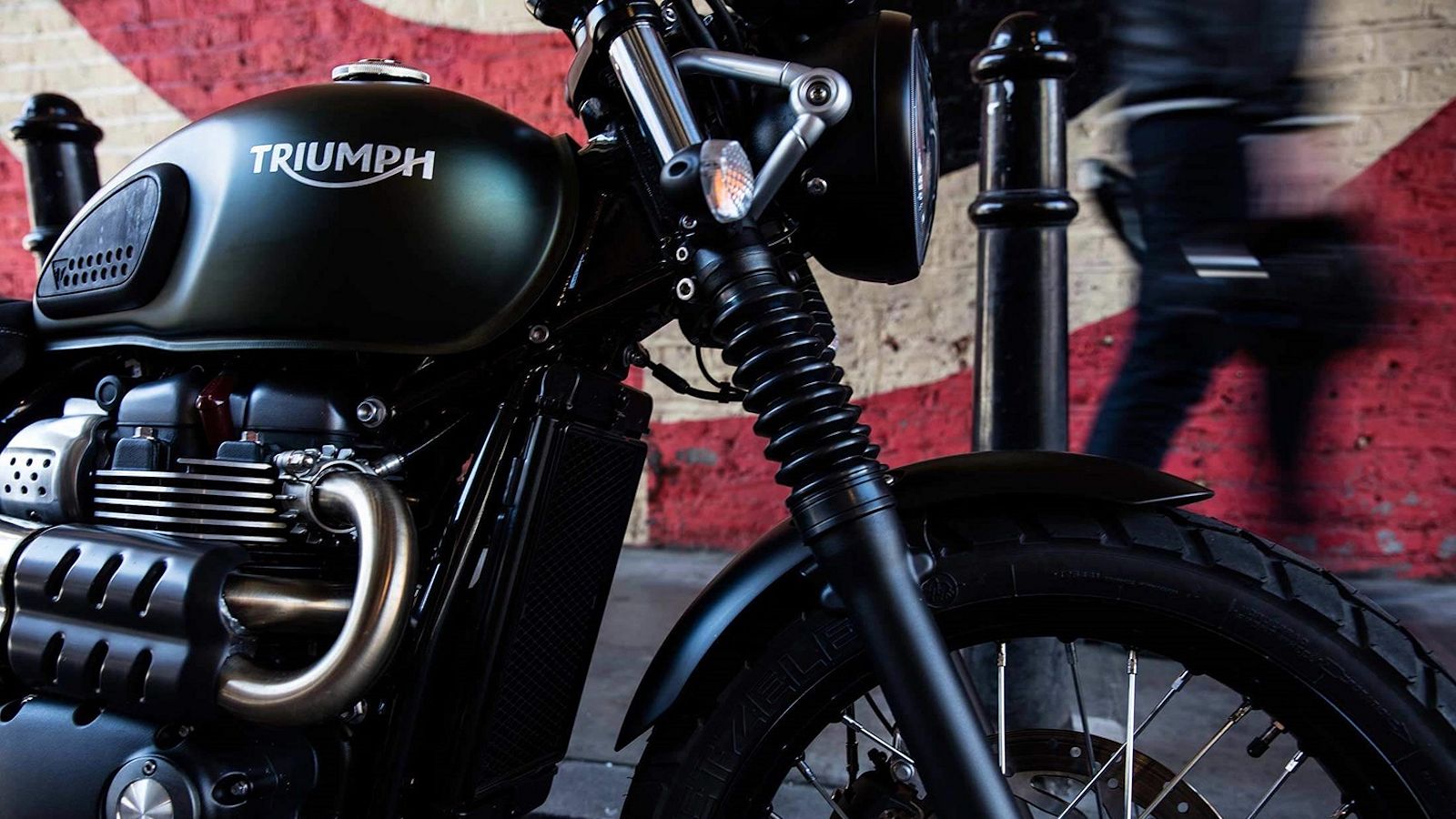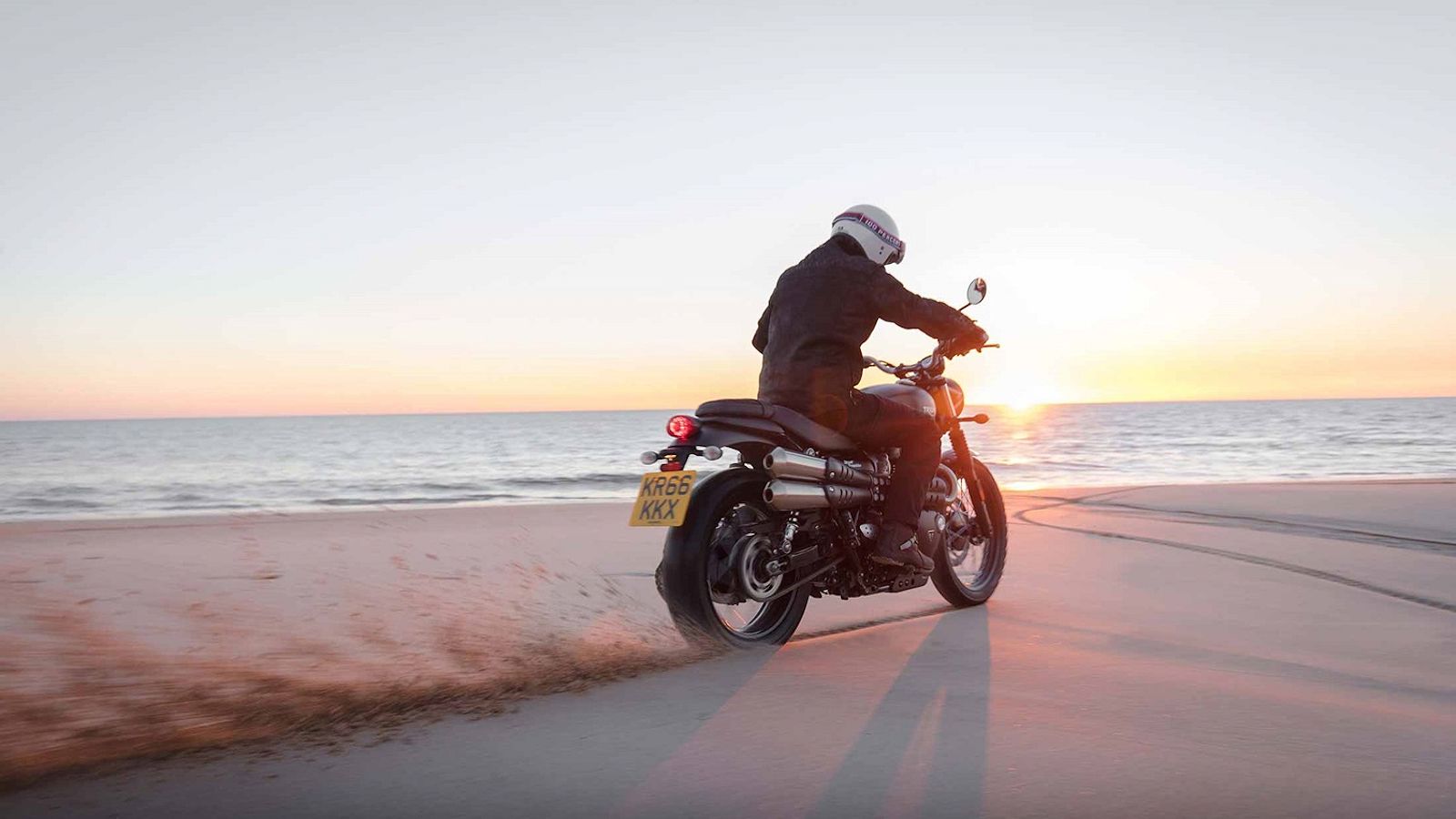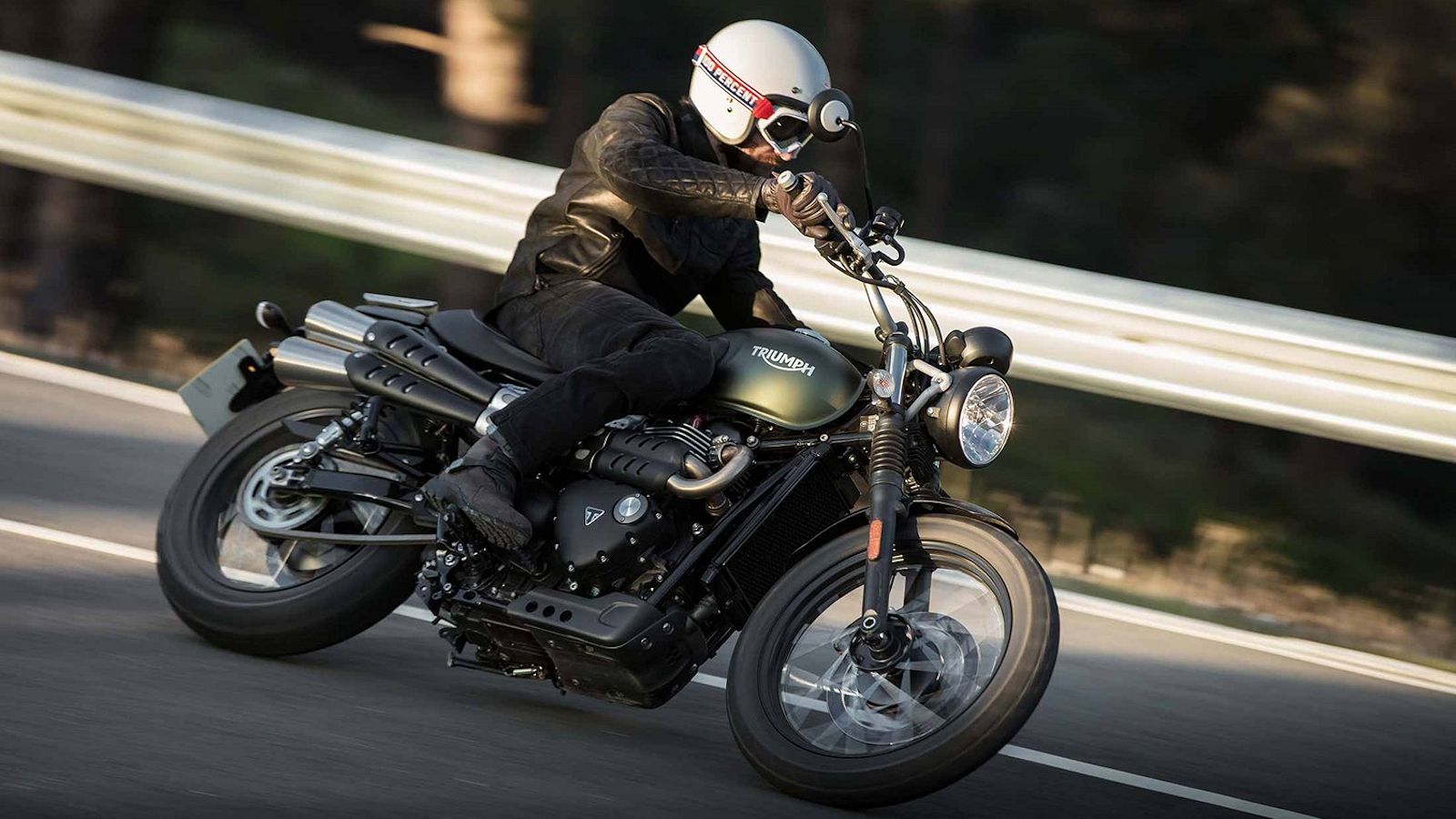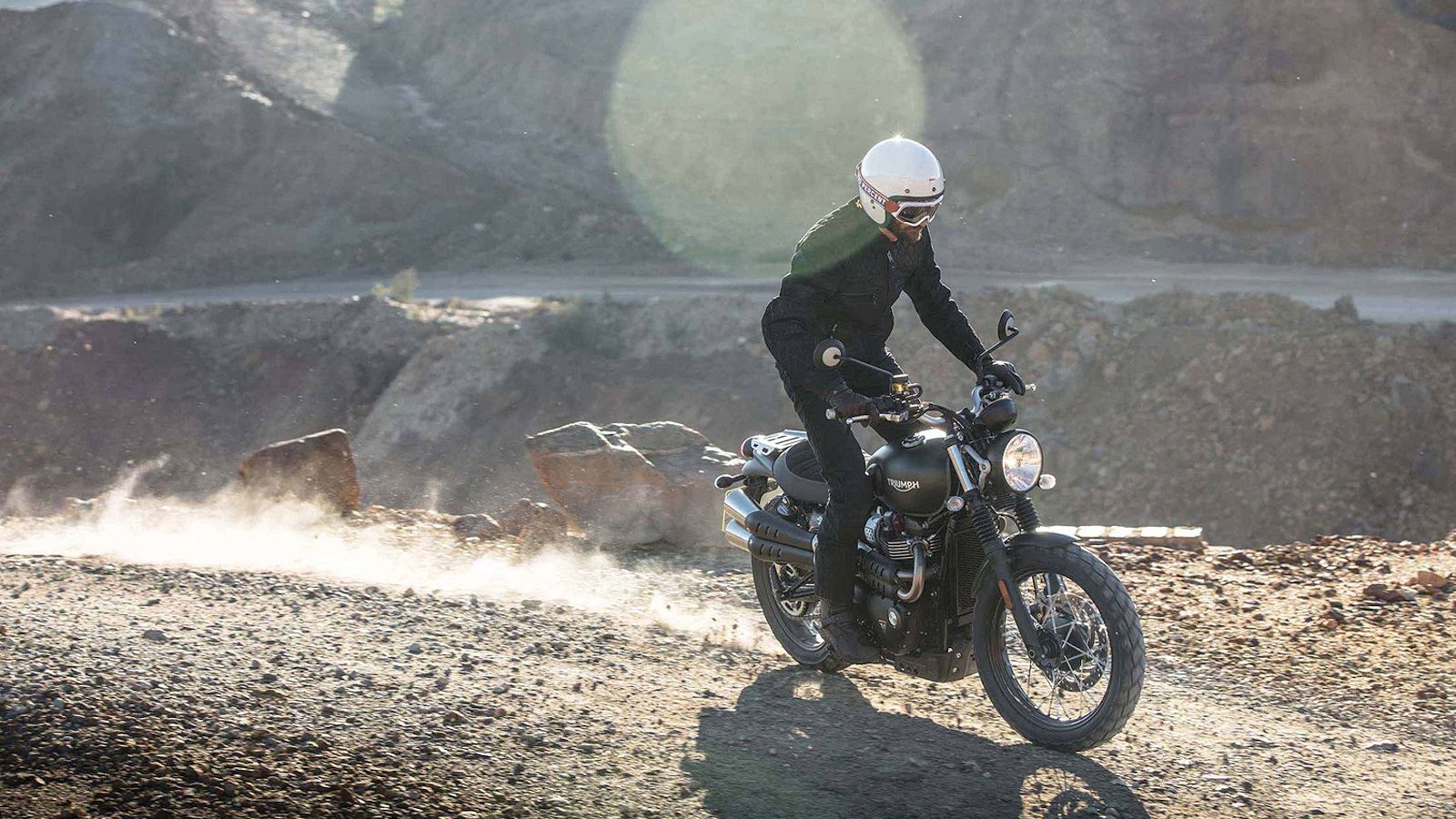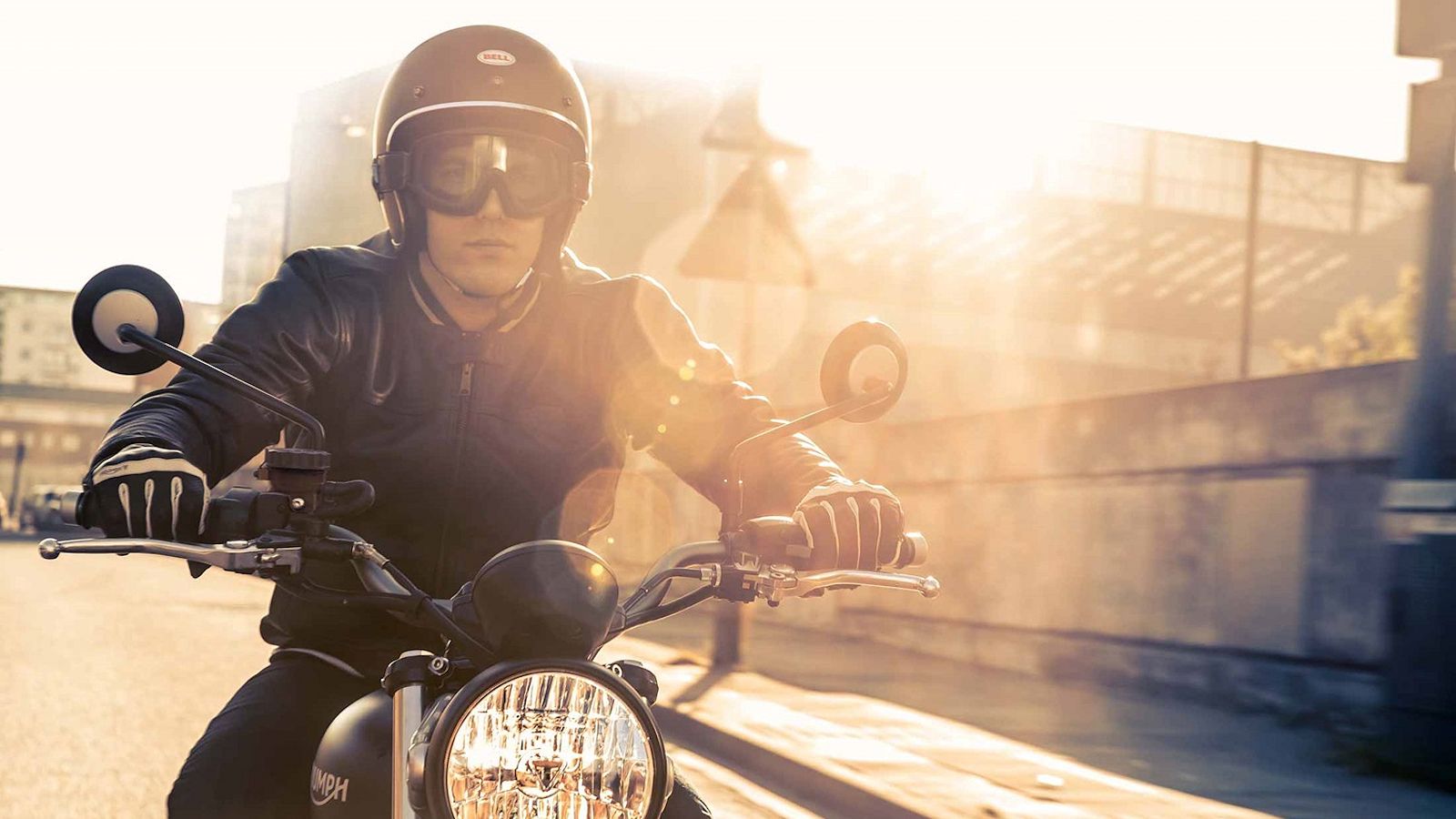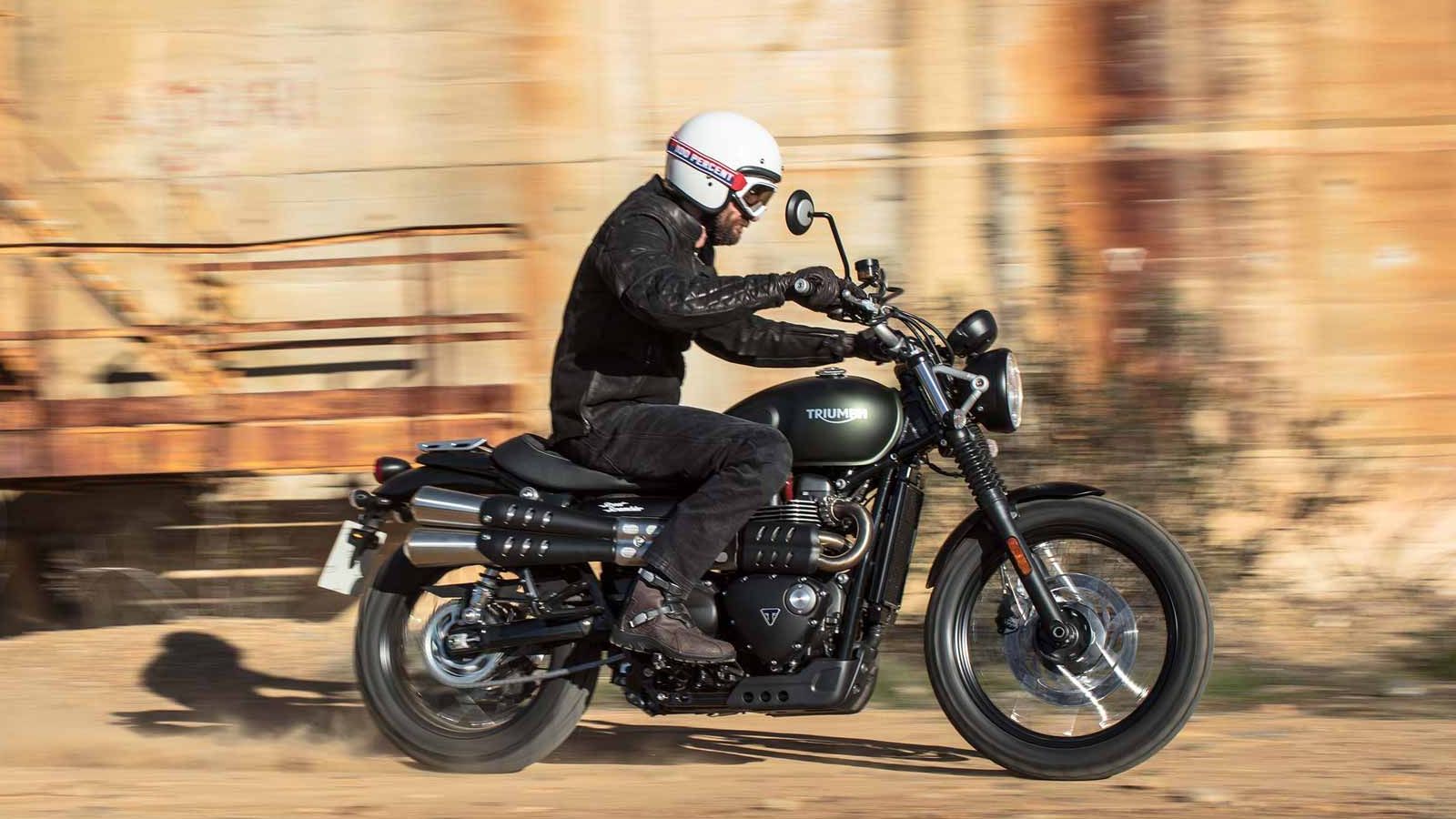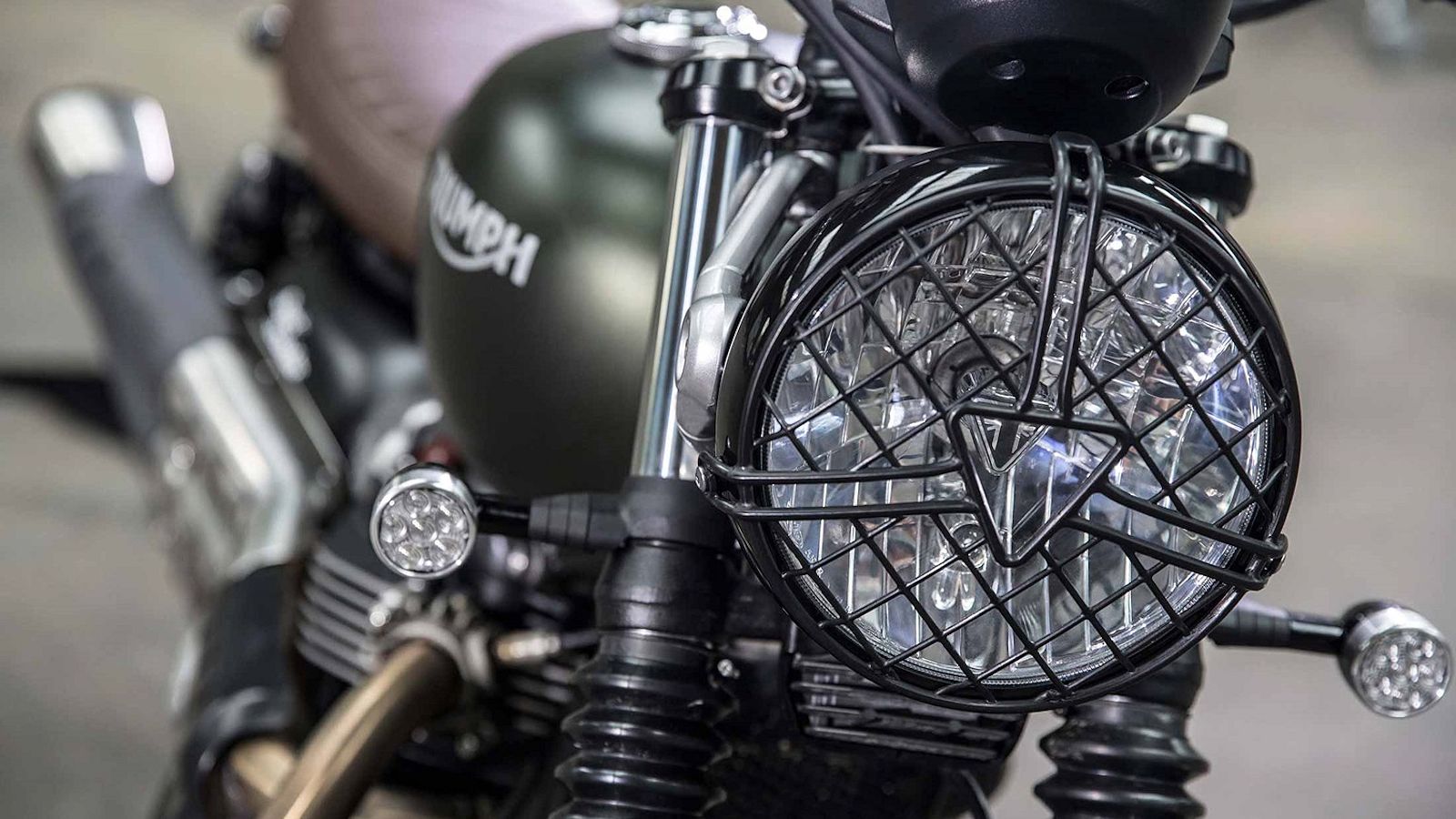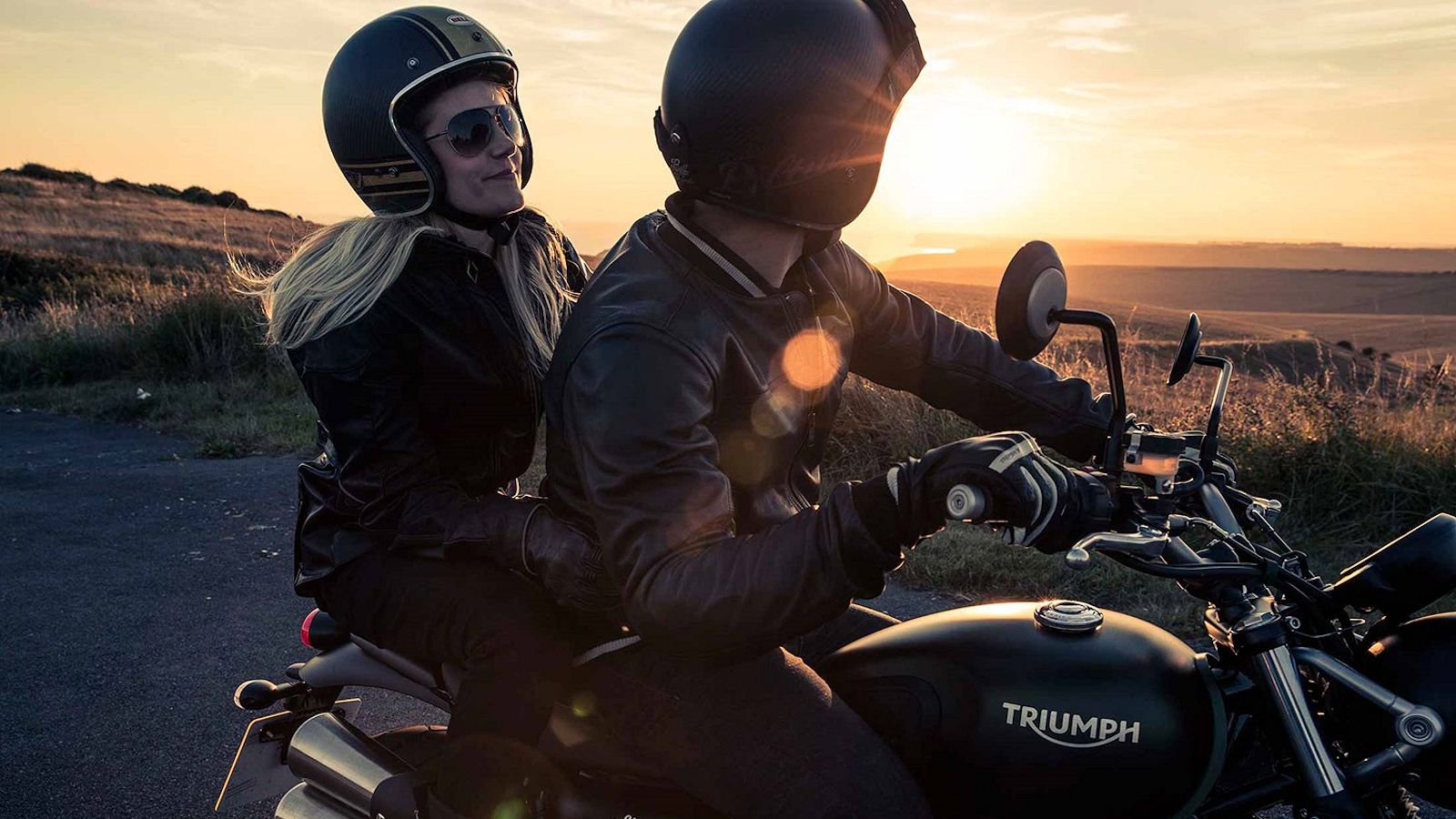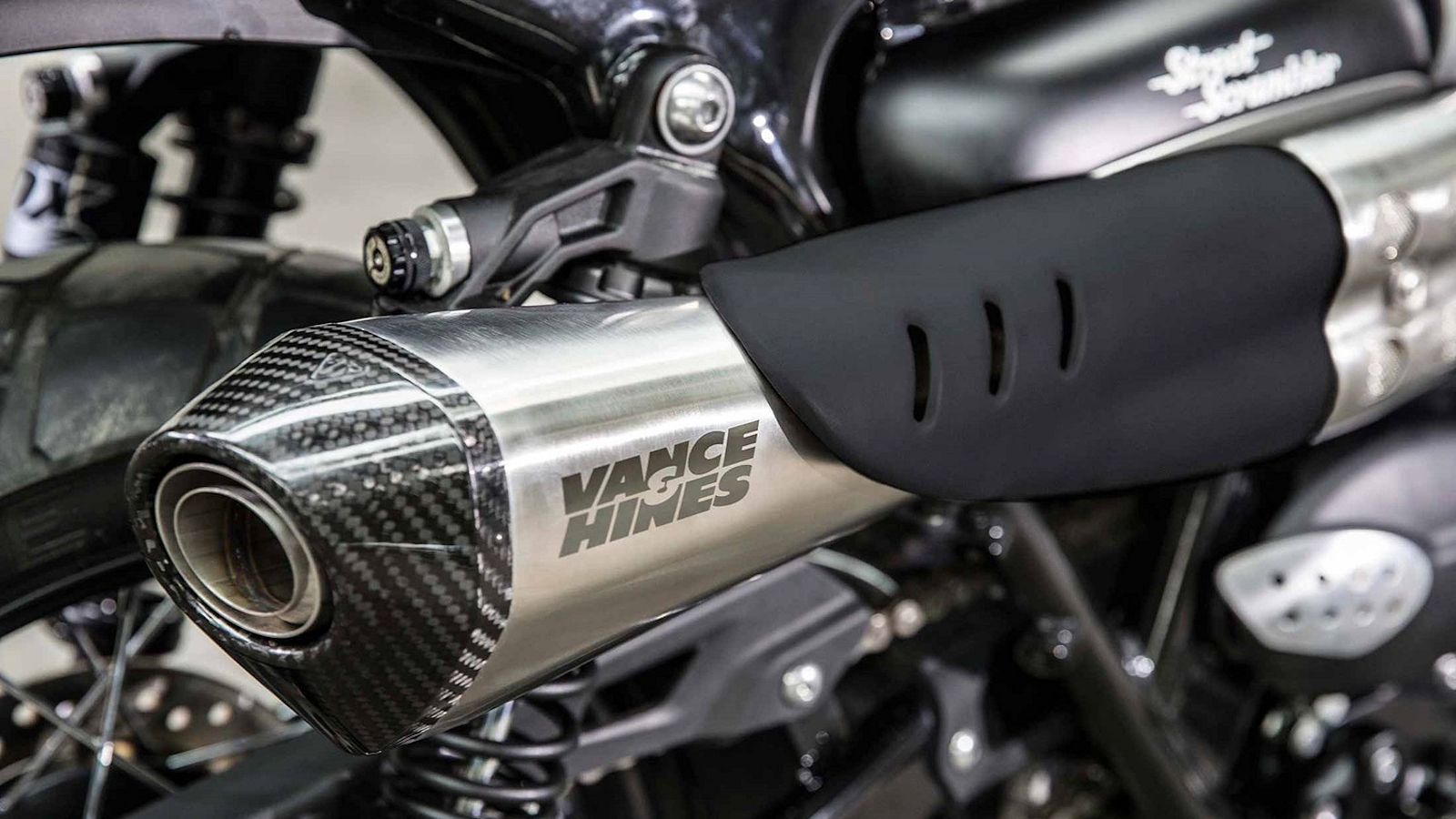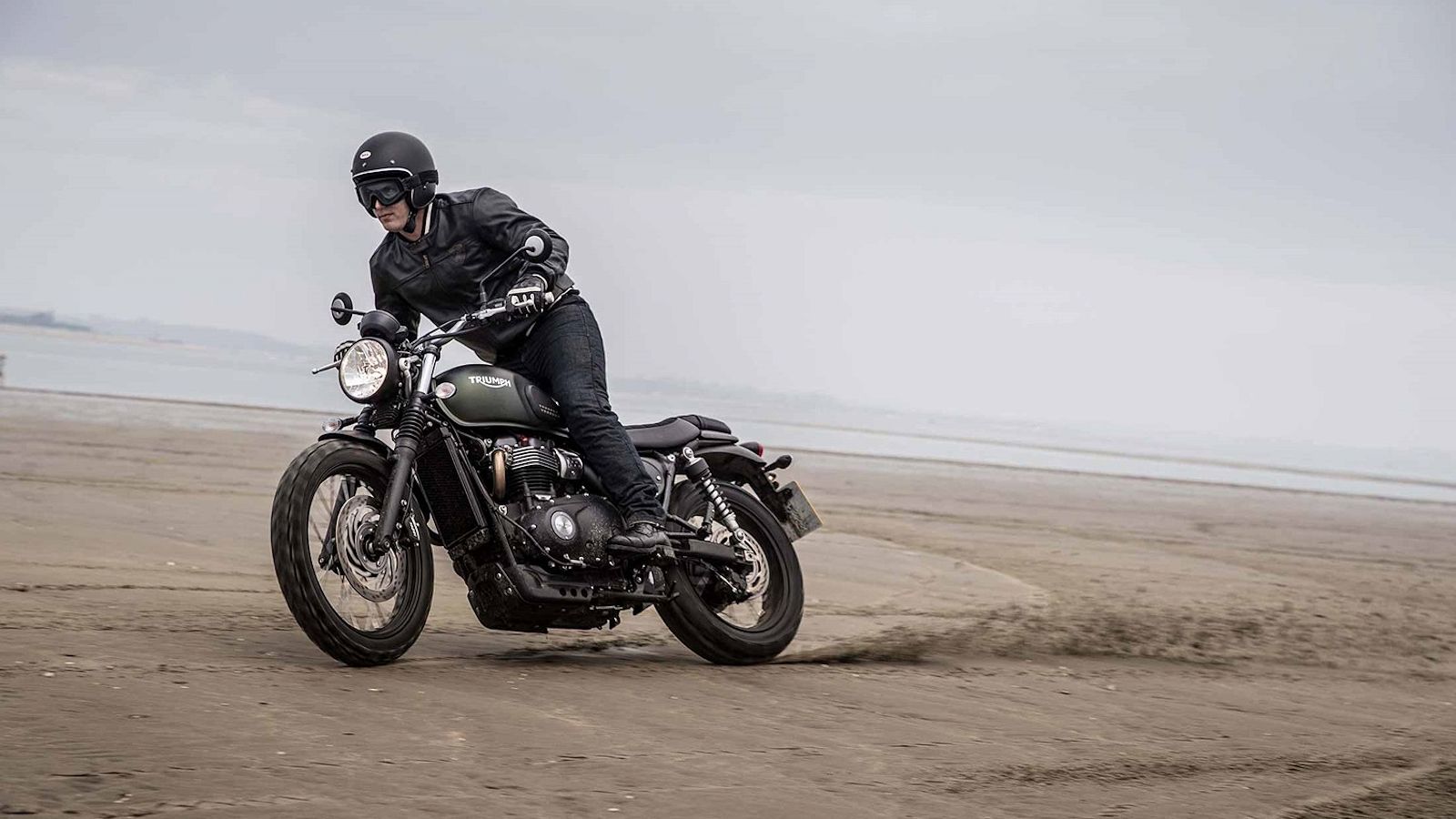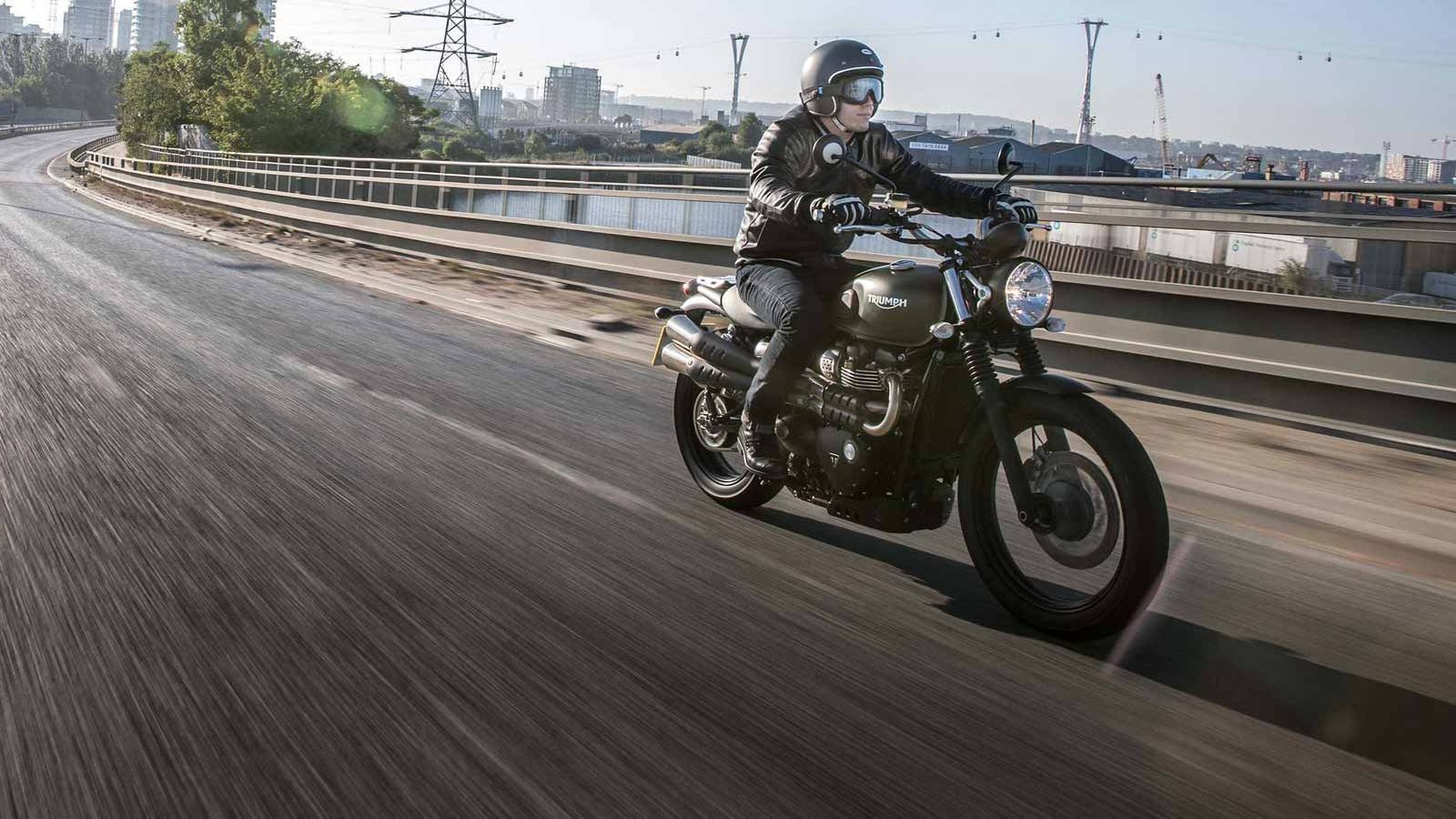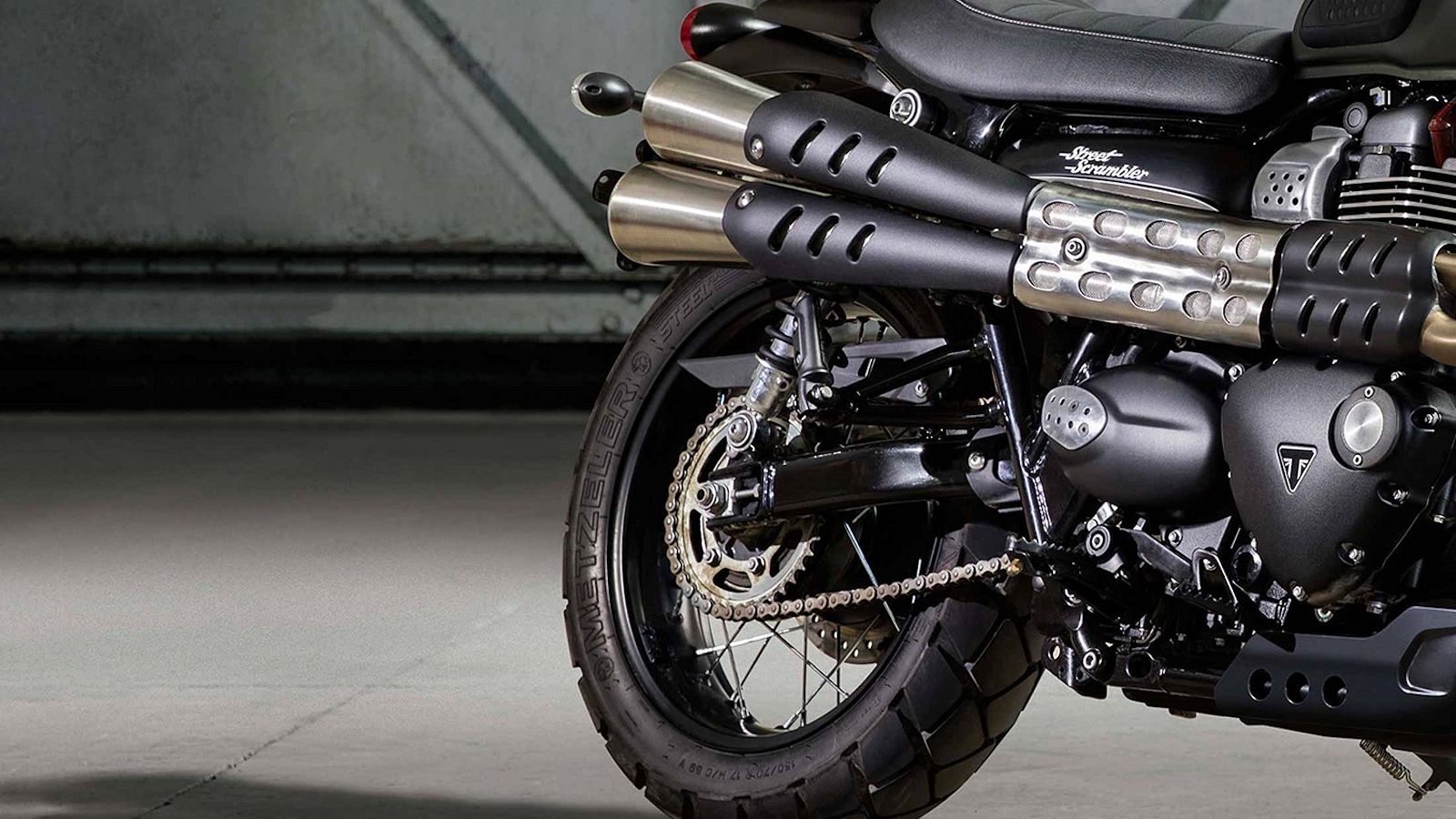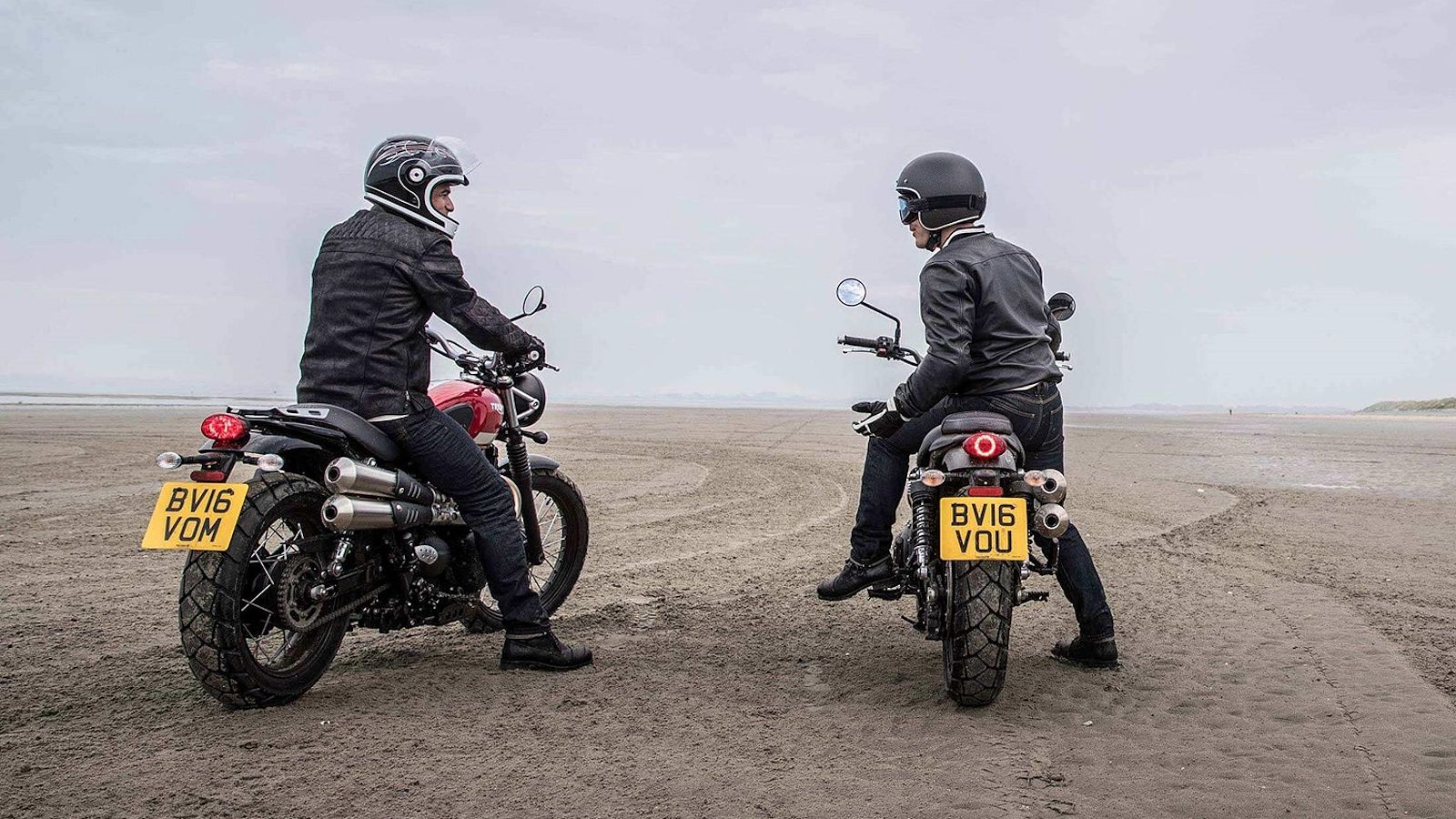Triumph has been getting some mileage out of its new 900 cc engine, and this mill drives yet another mid-size ride for the “Street Twin” family: the Street Scrambler. As the name implies, this bike is built mainly for urban use but comes with an off-road capability one simply does not get from a straight-up streetbike. The Street Scrambler brings rider-friendly performance and stable handling to the table, but in a market glutted with scrambler models from all over the globe, one has to wonder if that is enough to stay competitive. Let's delve into this Triumph and find out.
Continue reading for my review of the Triumph Street Scrambler.
2017 - 2018 Triumph Street Scrambler
- Make: Array
- Model: 2017 - 2018 Triumph Street Scrambler
- Engine/Motor: Parallel-Twin
- [do not use] Vehicle Model: Array
Design
Whether you find the looks a little bland, or simply dignified, is up to you. For myself, I like the mature look of the Scrambler, and find it more appropriate for a slightly older crowd than say, the Ducati Scrambler family, for instance. As much as I like it, I have to admit it's a little stodgy, but it is a British bike after all, and a certain amount of that is to be expected.
Blackout fork sliders and a cut-down front fender lend the bike a custom flavor while the laced, 19-inch front rim and bellow-gaiters prepare the bike for off-road work. A blackout headlight can holds the cyclops light, and just above, the single clock holds all of the instrumentation.
From there we move aft to what I would have to call a typical Triumph tank complete with a locking gas cap, rubber-padded knee pockets and the classic brand badge. The stock rider seat comes with very little scoop, and is really almost a bench to be honest, but the pillion pad can be quickly detached and a small luggage rack mounted in its place for solo missions. Taillight, turn signals and plate holder finish out the rear end with nothing tucked away, but at least the lights themselves are bright LED types that are damn hard to ignore.
The two-into-two shotgun exhaust adds a bit of charm, and the factory cleverly hid the catatlytic converter behind one of the heat shields, because at the end of the day, we all care about the environment...just some of us prefer not to look too much like it.
Practical stuff aside, the high position of the double-barrel exhaust lends the bike a certain sportiness that doesn't quite cross over into the whimsical, but instead looks more like a case of function disguised as form. Bear-trap footpegs provide positive foot-to-bike engagement, and won't get slicked by rain, mud or sand. The rider triangle is relaxed and upright when seated, and provides a very natural stance when riding in the standing position, all good stuff if you plan on getting off the black and onto the brown on occasion.
Chassis
The double-downtube / double-cradle frame and twin-side swingarm all come made from tubular-steel stock. This doesn't do the overall weight any favors -- the bike weighs 454 pounds, dry -- but it does provide a stiff and stable platform for on- and off-road shenaniganery.
Laced rims and fork gaiters make the bike look kind of off-road capable, but it's the KYB suspension that actually makes it capable. The 41 mm forks come sans adjustment, but the pair of coil-over rear shocks at least provide the obligatory preload adjustments, and components at both ends give up 4.72 inches of wheel travel at the axle. This is enough for romps down the beach, really rough roads light off-road terrain, but you can forget about any supercross-like moves, it ain't that kind of bike.
The brakes are a bit on the mild side with a twin-pot Nissin caliper to bite the single, 310 mm disc up front, and the same caliper with a 255 mm disc to slow the rear. Switchable ABS comes as part of the standard equipment package, which is good because most riders will want it on for the black, and want it off for intentional slides on the brown.
Asymmetrical wheels give the Scrambler a final, off-roady touch with a 19-inch, 100/90 hoop leading the way and a 17-inch, 150/70 bringing up the rear. Tread style makes the tires more suited for urban work, but the hoops aren't completely useless on softer surfaces, and are sufficient for light work as long as you manage your expectations.
Wide handlebars give you the leverage to keep the front end under control when negotiating the brown, and give the bike a stable character in the corners. Not exactly wooden, but the 25.6-degree rake and 4.3-inch trail does leave it a trifle reluctant in the corners compared to sportier models. Finally, the 31.1-inch saddle height should be friendly to all but the shortest of inseams.
|
Frame: |
Tubular steel cradle |
|
Swingarm: |
Twin-sided, tubular steel |
|
Rake: |
25.6º |
|
Trail: |
4.3 in (109 mm) |
|
Front Suspension: |
KYB 41 mm cartridge forks, 120 mm travel |
|
Rear Suspension: |
KYB twin shocks with adjustable preload, 120mm rear wheel travel |
|
Brakes Front: |
Single 310 mm disc, Nissin 2-piston floating caliper, ABS |
|
Brakes Rear: |
Single 255 mm disc, Nissin 2-piston floating caliper, ABS |
|
Front Wheel: |
Wire 32-spoke - Steel Rims.19 x 2.5 in |
|
Rear Wheel: |
Wire 32-spoke - Steel Rims.17 x 4.25 in |
|
Tires, Front/Rear: |
100/90-19/150/70 R17 |
Drivetrain
Now for the drivetrain that Triumph hinges its mid-size-cruiser hopes upon: the 900 cc “Twin.” This modern powerplant runs a single over-head cam to time the eight-valve head, and a water jacket that both carries off waste heat and acts as a sound dampener for the threshing noises inside the cases. Although the 84.6 mm bore and 80 mm stroke is arranged in the traditional parallel-twin configuration, it comes with a 270-degree offset in the crank that gives the engine a lope at idle that you simply can't get from one of the old, 180-degree “twingle” engines.
Slightly oversquare, the mill has a predictably torquey nature with a solid, 59 pound-feet of grunt at an incredibly low, 2,850 rpm. That comes backed up by 55 ponies at 6,000 rpm, and the power delivery is rather linear for a manageable temperament that won't really surprise you or get away from you without deliberate provocation. Compression is a little on the warm side at 10.55-to-1, so you will need the mid-grade pump to prevent pre-ignition/detonation/dieseling.
A ride-by-wire throttle enables a switchable traction-control system that helps prevent loss of traction due to an off-balance, throttle-to-traction ratio. As with the ABS, this feature is something that's great for the street, but you'll want to turn it off for the off-road work, 'cause you can't make flat-track turns if you can't spin that rear wheel.
A torque-assist clutch makes the connection between the engine and the five-speed transmission, and this gives the Scrambler yet another layer of traction protection by preventing rear-wheel hop under heavy engine braking, with the added bonus of a lighter clutch-lever pull. Electronic engine controls, liquid-cooling and a catalytic converter all help the Scrambler meet EURO 4 emissions standards with an average fuel consumption of 61.95 mpg.
|
Engine: |
Liquid cooled, 8 valve, SOHC, 270° crank angle parallel twin |
|
Displacement: |
900 cc |
|
Bore x Stroke: |
3.3 (84.6) x 3.1 in (88mm) |
|
Compression: |
10.55:1 |
|
Max Power EC: |
55 hp (40.5kW) @ 6,000 rpm |
|
Max Torque EC: |
59 ft-lbs (80Nm) @ 2,850 rpm |
|
System: |
Multipoint sequential electronic fuel injection |
|
Exhaust: |
Brushed stainless steel 2 into 2 exhaust system with twin silencers |
|
Gearbox: |
5-speed |
Pricing
The Jet Black Scrambler will set you back $10,800, but the Matte Khaki Green fetches $11,050 and the two-tone, Korosi Red / Frozen Silver commands the premium price at $11,300.
|
Colors: |
Jet Black, Korosi Red / Frozen Silver, Matt Khaki Green |
|
Price: |
|
|
2017: |
Jet Black: $10,700, Korosi Red / Frozen Silver: $11,200, Matt Khaki Green: $10,950 |
|
2018: |
Jet Black: $10,800, Korosi Red / Frozen Silver: $11,300, Matt Khaki Green: $11,050 |
Competitors
Since Ducati built a veritable fleet of scrambler-based bikes, I decided to pick their most scramble-tastic model and went with the”Classic.” In the looks department, the whimsical Duc looks a bit sophomoric compared to the dignified panache of the Triumph. It's almost as though both bikes try to target the same kind of buyer, just at different ages. Both carry some blackout features with a cut-down front fender that lends them a custom air with clean lines that flow across the tank to the bench seat. Triumph's tank is definitely the more attractive of the two; the knee dents, rubber pads and classic shape just does it for me.
Tubular-steel frames are a constant across the board, and both favor asymmetrical wheels though Ducati runs an 18-inch front against the Triumph's 19-inch wheel and both run a 17-inch hoop in back. Like the Trumpet, Duc runs a set of 41 mm stems but opts for the usd type rather than the standard variety. The “Classic” brings a bit more off-road capability to the table in the form of some very long suspension strokes that falls just one-tenth of an inch short of 6 inches at the axle, quite a bit more than the 4.75 inches from the Triumph's gear. ABS comes standard on both rides.
Ducati powers its ride with an 803 cc “L-twin” that uses the desmodromic valvetrain long-associated with the brand. The Italian mill is air-cooled, thus simpler in construction, and runs electronic engine controls with EURO 4 emissions compliance. More of a horsepower engine, the oversquare Duc plant cranks out 75 ponies at 8,250 rpm and 50 pounds of grunt at 5,750 rpm versus 55/59 from the Trumpet Twin. Not a big offset, but one that shows vast differences in personality and temperament.
Duc ekes out a slim victory at the till with a $10,495 sticker against the $10,800 tag on the basic black Street Scrambler. Far too slim of a margin to buy any business here, and I think in the battle between these two bikes, it's going to come down to looks nearly every time.
He Said
“Fun stuff. Triumph has long been my favorite non-American brand, and although I prefer some of their larger rides, this sled looks like it would be a blast around town and on rough country backroads. Definitely a fan of the twice-barrel, side-by-side shotgun exhaust.”
She Said
My wife and fellow motorcycle writer, Allyn Hinton, says, "The new Scrambler is more a cousin to the Street Twin than it is to the old Scrambler. Even though Triumph teased us with an early concept pic that looked like it would have a dirt-bike suspension, the Scrambler is actually more street-oriented than you might expect a scrambler to be. For off-road work, you'd definitely want to have a skid plate, but the skid plate on the Scrambler is plastic, so again, street oriented but looks off-road worthy. Looks won't take you there, though. You can turn off traction control and ABS, so with a little customization, you might end up with a proper scrambler."
scrambler0}
|
Engine & Drivetrain: |
|
|
Engine: |
Liquid cooled, 8 valve, SOHC, 270° crank angle parallel twin |
|
Displacement: |
900 cc |
|
Bore x Stroke: |
3.3 (84.6) x 3.1in (88mm) |
|
Compression: |
10.55:1 |
|
Max Power EC: |
55 hp (40.5kW) @ 6,000 rpm |
|
Max Torque EC: |
59 ft-lbs (80Nm) @ 2,850 rpm |
|
System: |
Multipoint sequential electronic fuel injection |
|
Exhaust: |
Brushed stainless steel 2 into 2 exhaust system with twin silencers |
|
Final drive: |
Chain |
|
Clutch: |
Wet, multi-plate assist clutch |
|
Gearbox: |
5-speed |
|
Chassis: |
|
|
Frame: |
Tubular steel cradle |
|
Swingarm: |
Twin-sided, tubular steel |
|
Rake: |
25.6º |
|
Trail: |
4.3 in (109 mm) |
|
Front Suspension: |
KYB 41 mm cartridge forks, 120 mm travel |
|
Rear Suspension: |
KYB twin shocks with adjustable preload, 120 mm rear wheel travel |
|
Brakes Front: |
Single 310 mm disc, Nissin 2-piston floating caliper, ABS |
|
Brakes Rear: |
Single 255 mm disc, Nissin 2-piston floating caliper, ABS |
|
Front Wheel: |
Wire 32-spoke - Steel Rims.19 x 2.5 in |
|
Rear Wheel: |
Wire 32-spoke - Steel Rims.17 x 4.25 in |
|
Tires, Front/Rear: |
100/90-19/150/70 R17 |
|
Dimensions & Capacities: |
|
|
Width Handlebars: |
32.7 in (831 mm) |
|
Height Without Mirror: |
44.1 in (1120 mm) |
|
Seat Height: |
31.1 in (790 mm) |
|
Wheelbase: |
57 in (1446 mm) |
|
Dry Weight: |
454 lb (206 kg) |
|
Tank Capacity: |
3.2 gal |
|
Fuel Consumption |
3.8 l/100 km (61.95 US mpg) |
|
Details: |
|
|
Instrument Display and Functions: |
LCD multi-functional instrument pack with analogue speedometer, odometer, gear position indicator, fuel gauge, range to empty indication, service indicator, clock, 2x trip, average & current fuel consumption display, traction control status display, TPMS ready & heated grip ready - controlled by a handlebar mounted scroll button (accessory). |
|
Colors: |
Jet Black, Korosi Red / Frozen Silver, Matt Khaki Green |
|
Price: |
|
|
2017: |
Jet Black: $10,700, Korosi Red / Frozen Silver: $11,200, Matt Khaki Green: $10,950 |
|
2018: |
Jet Black: $10,800, Korosi Red / Frozen Silver: $11,300, Matt Khaki Green: $11,050 |
References
Ducati Scrambler
See our review of the Ducati Scramblers.


